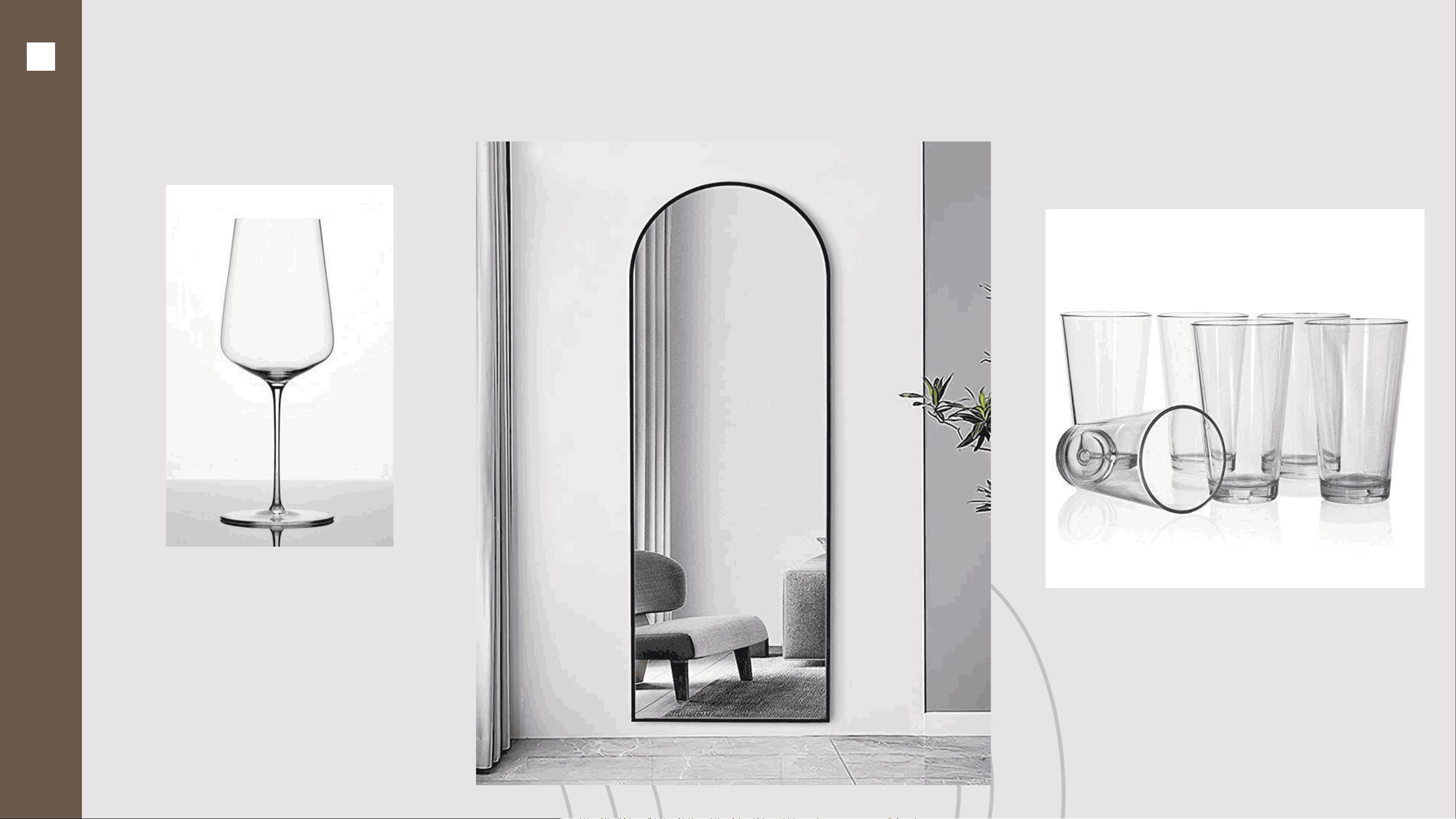
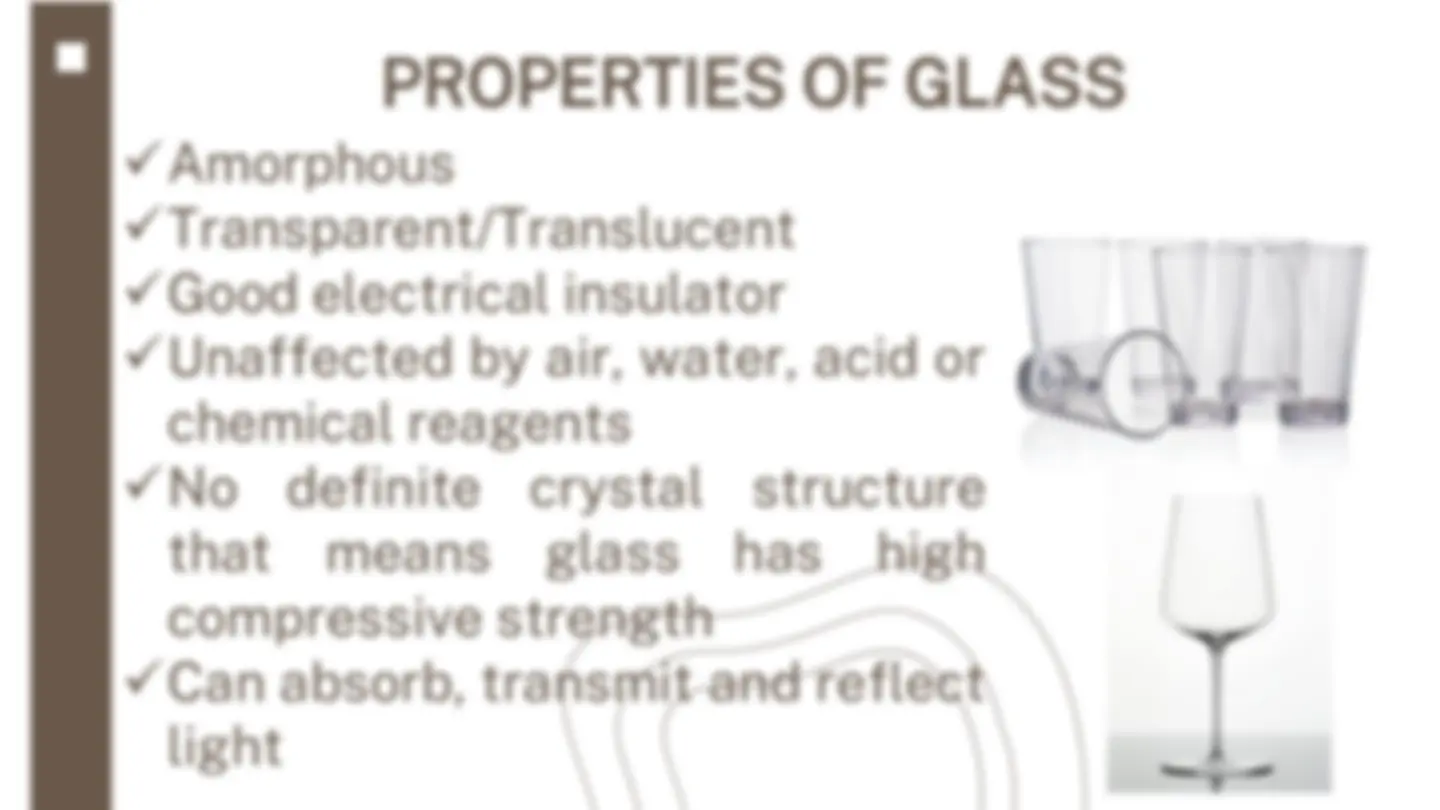
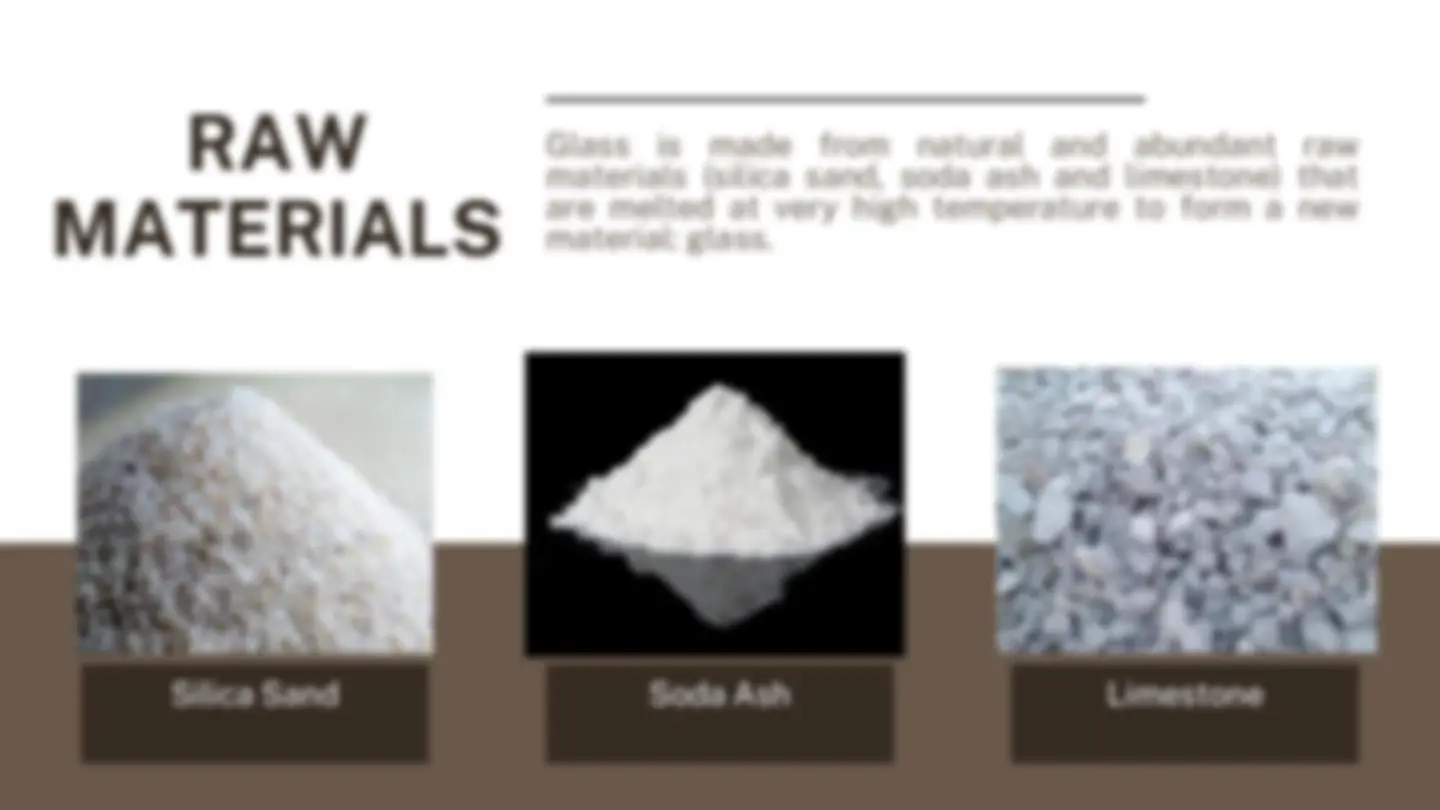
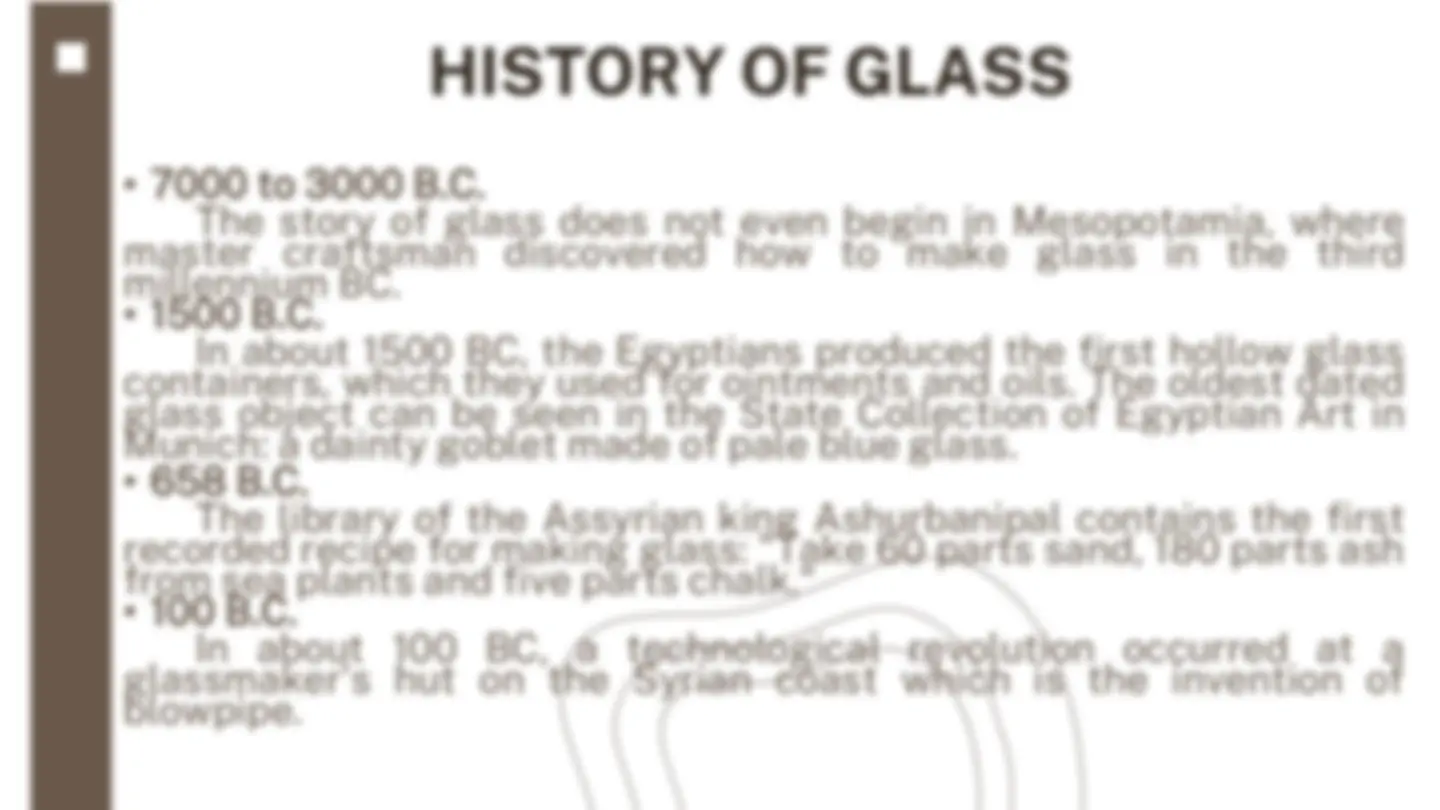
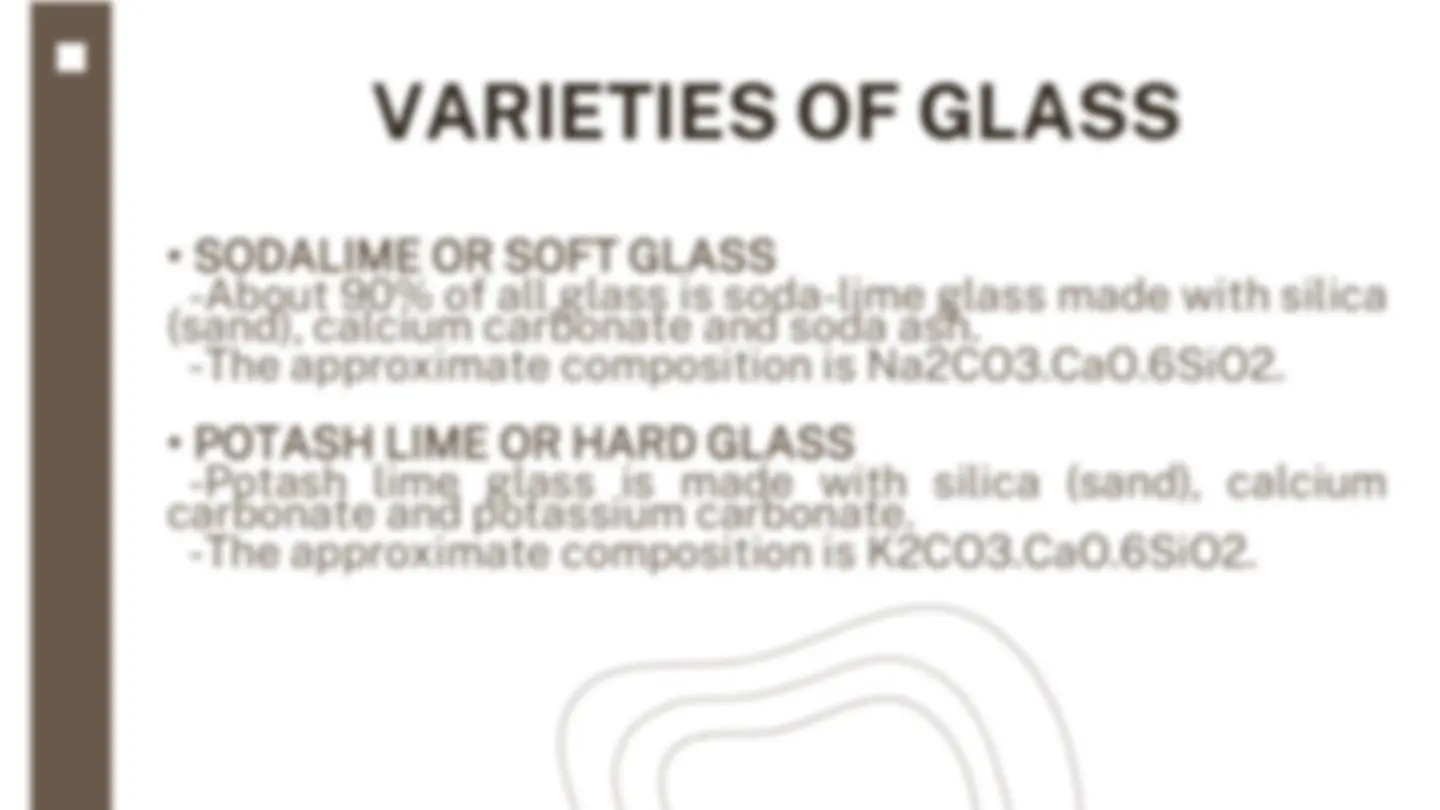
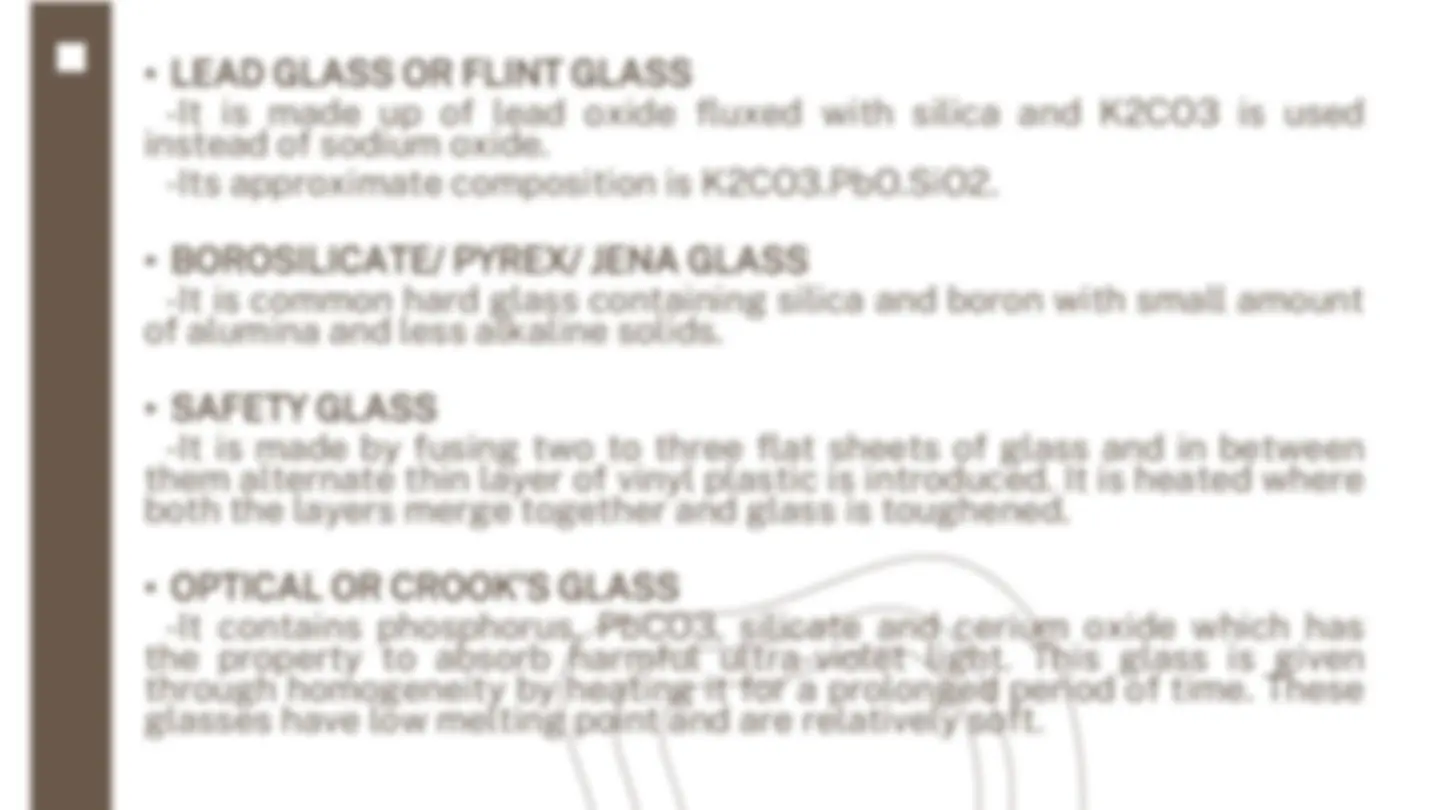
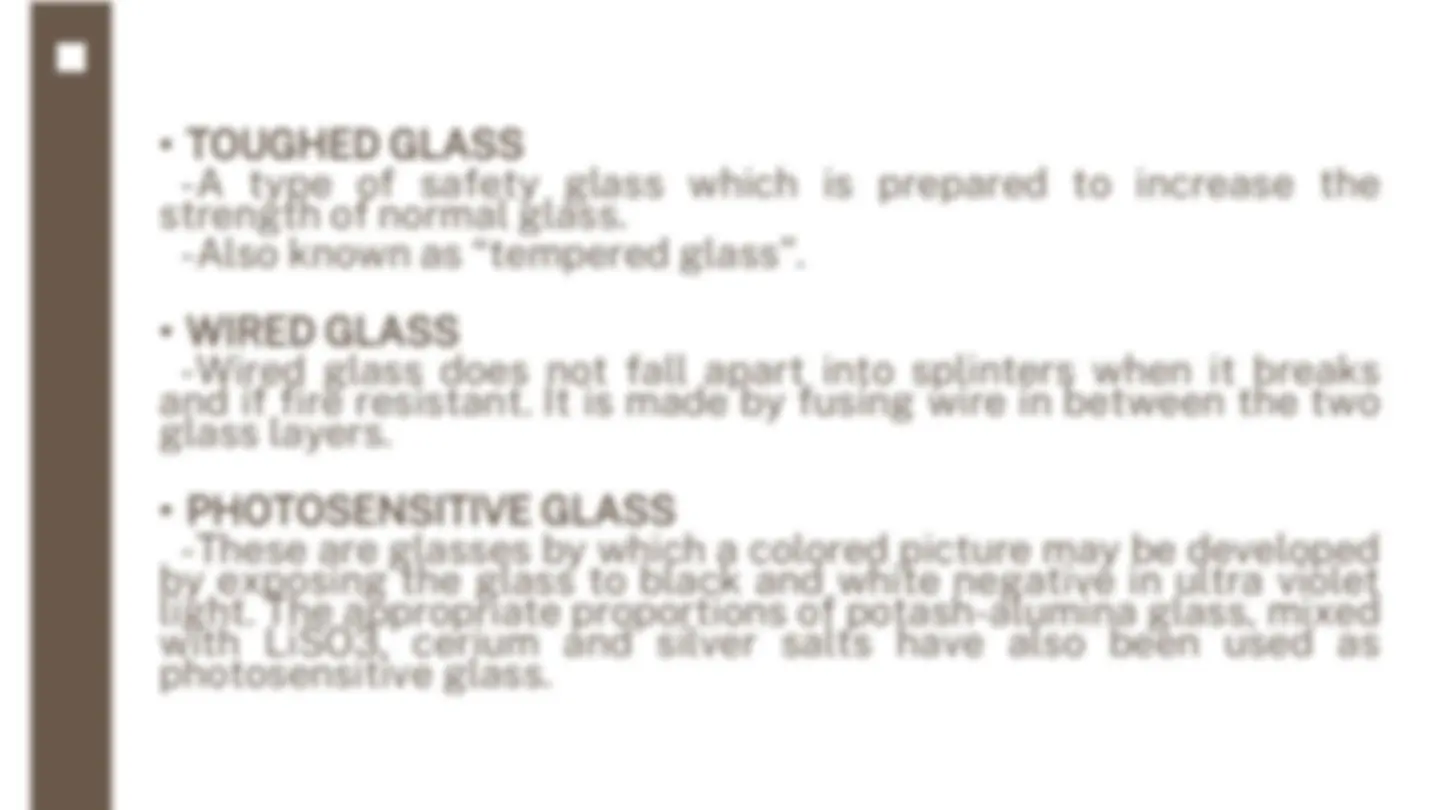
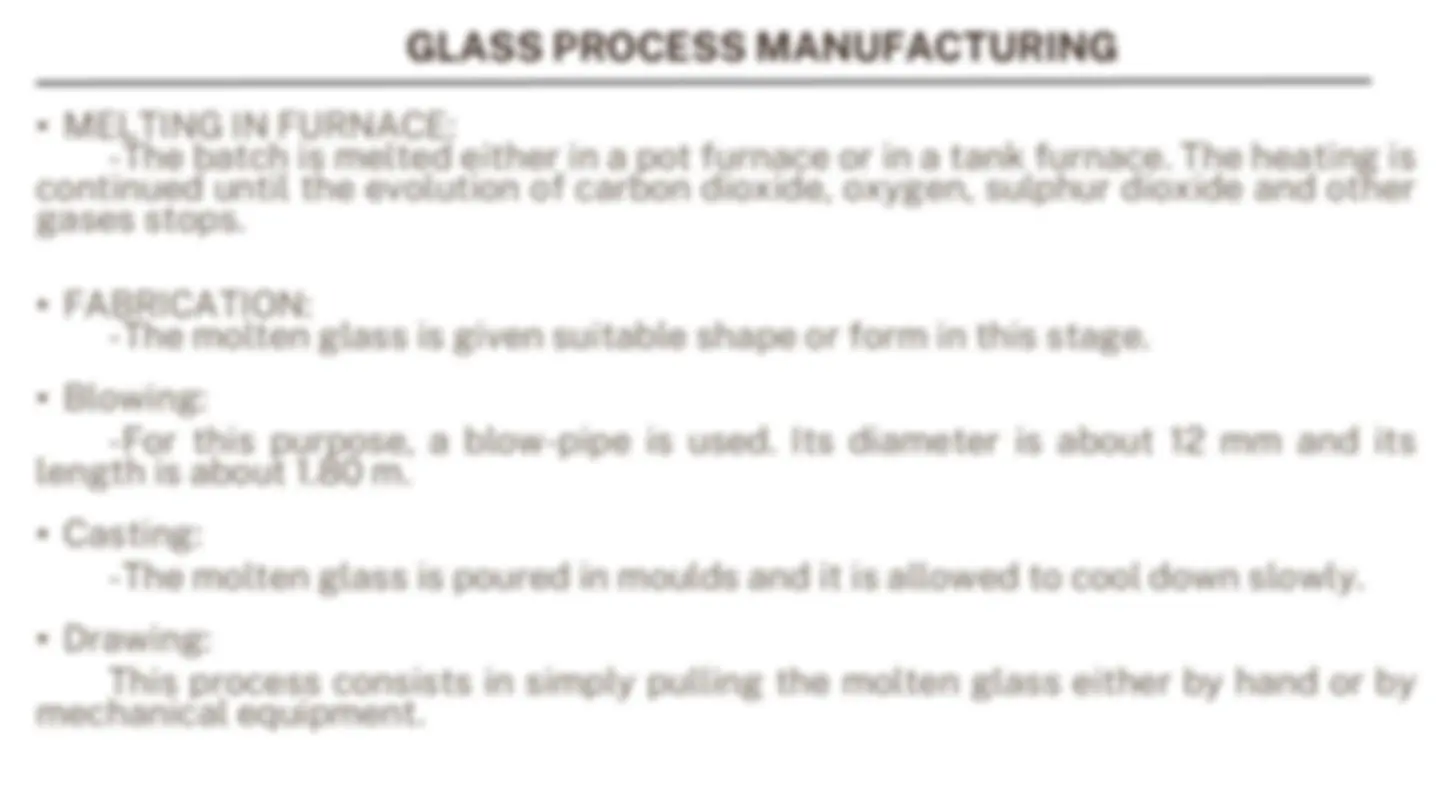
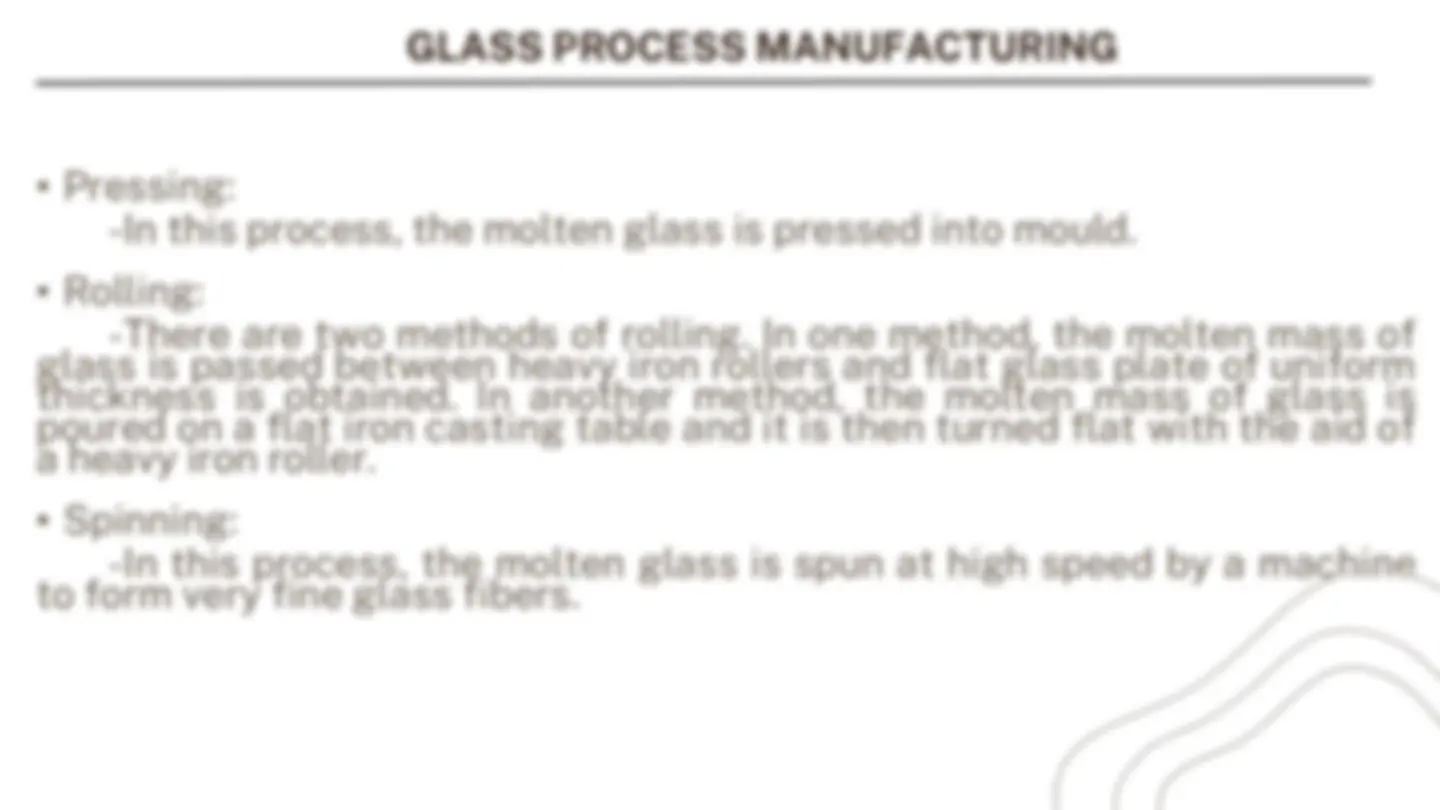
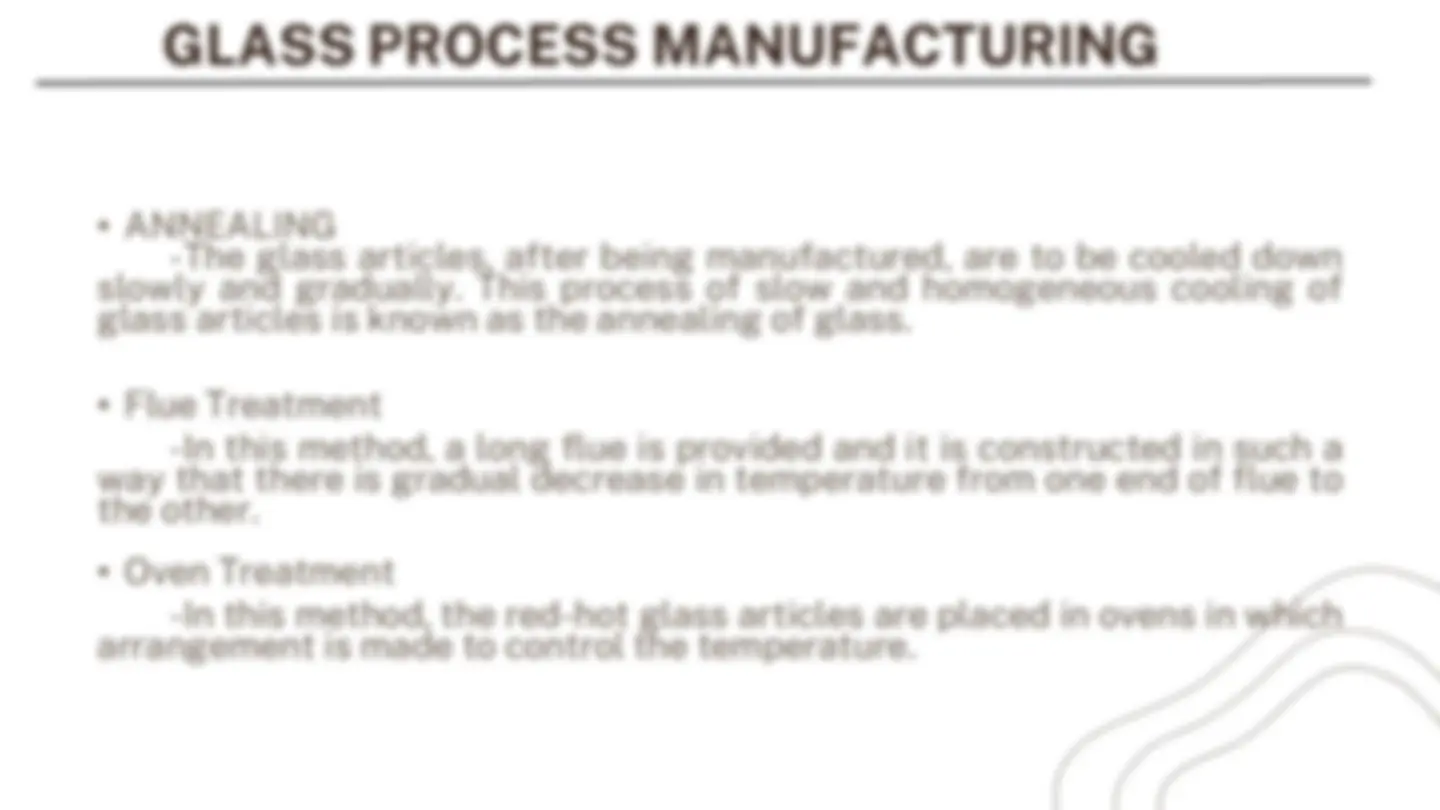
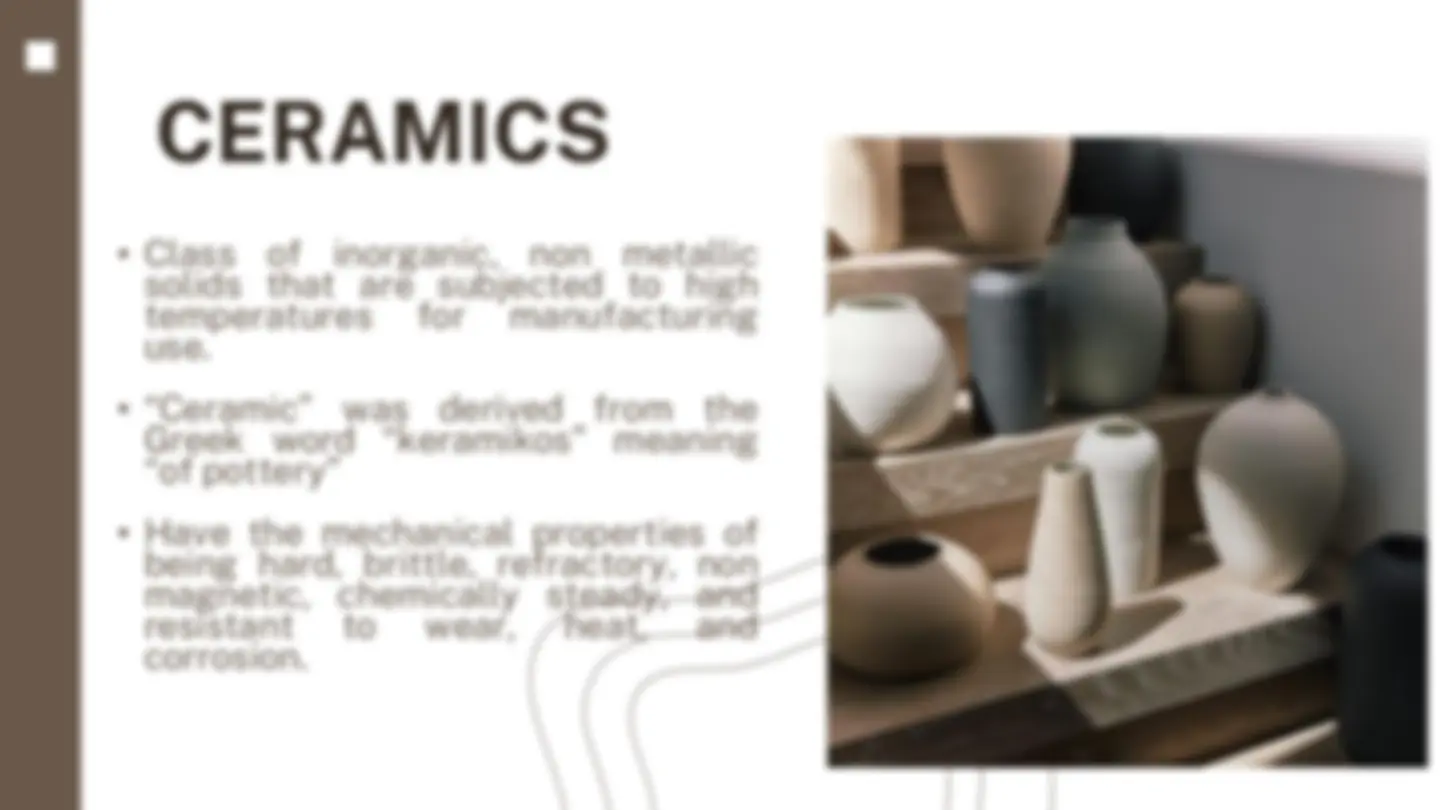
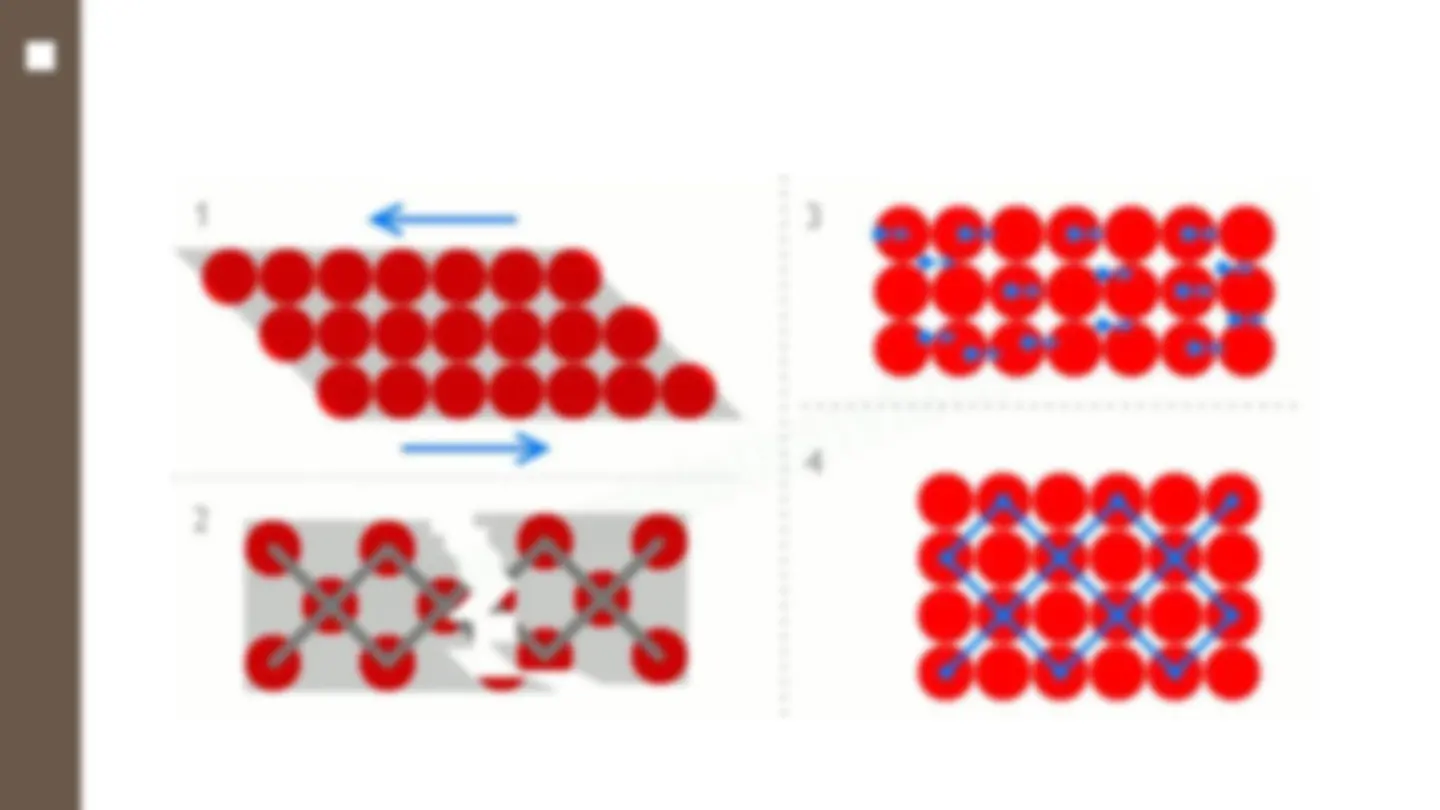
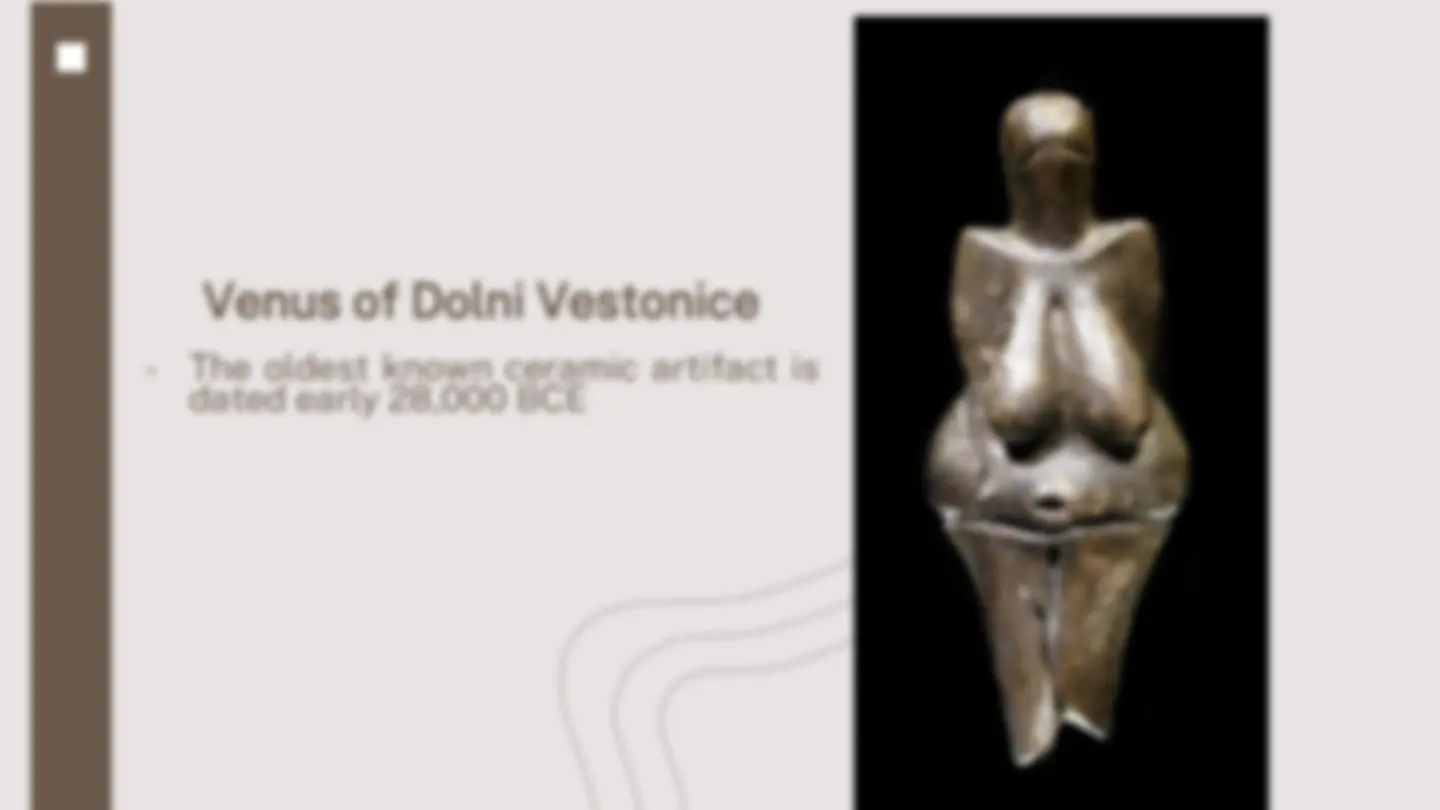
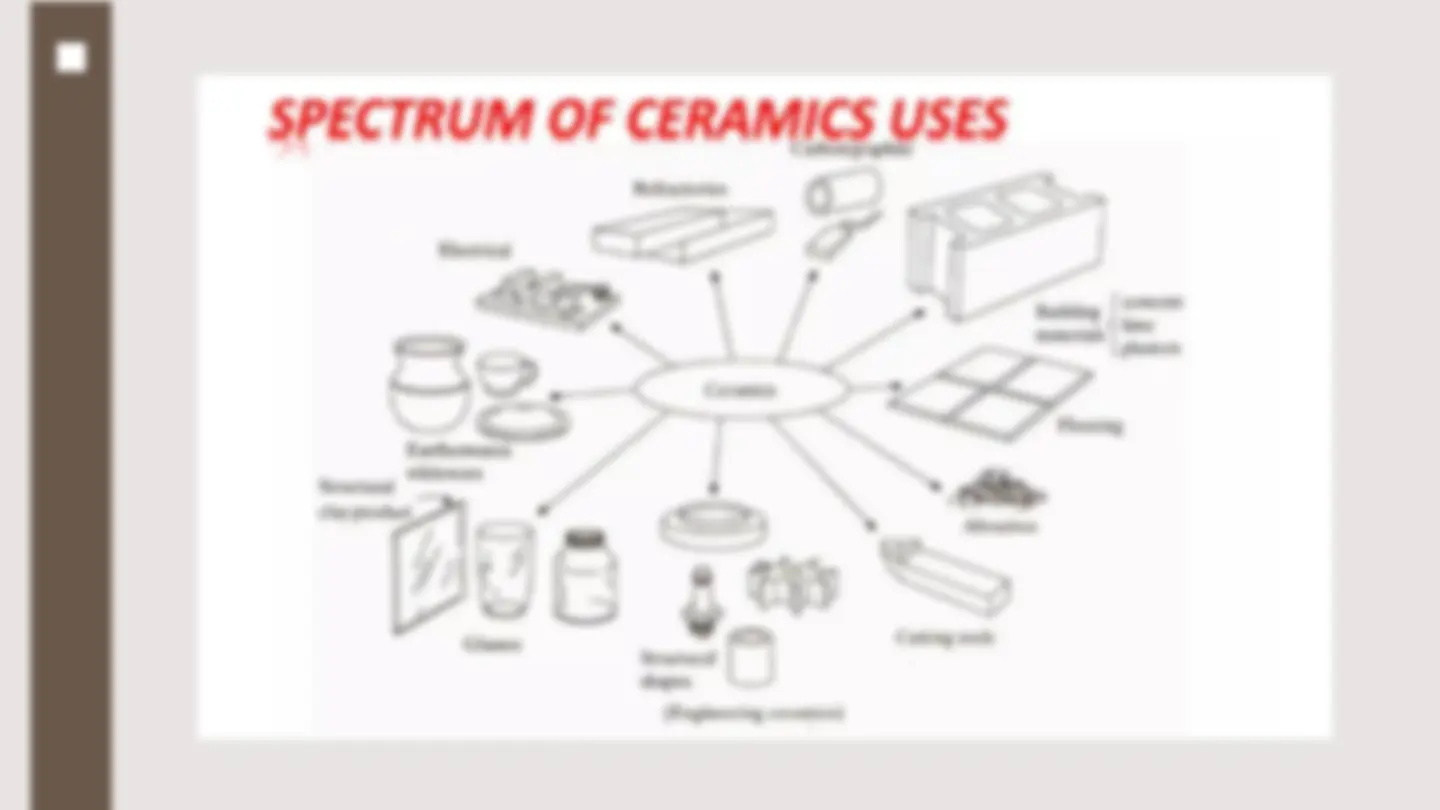
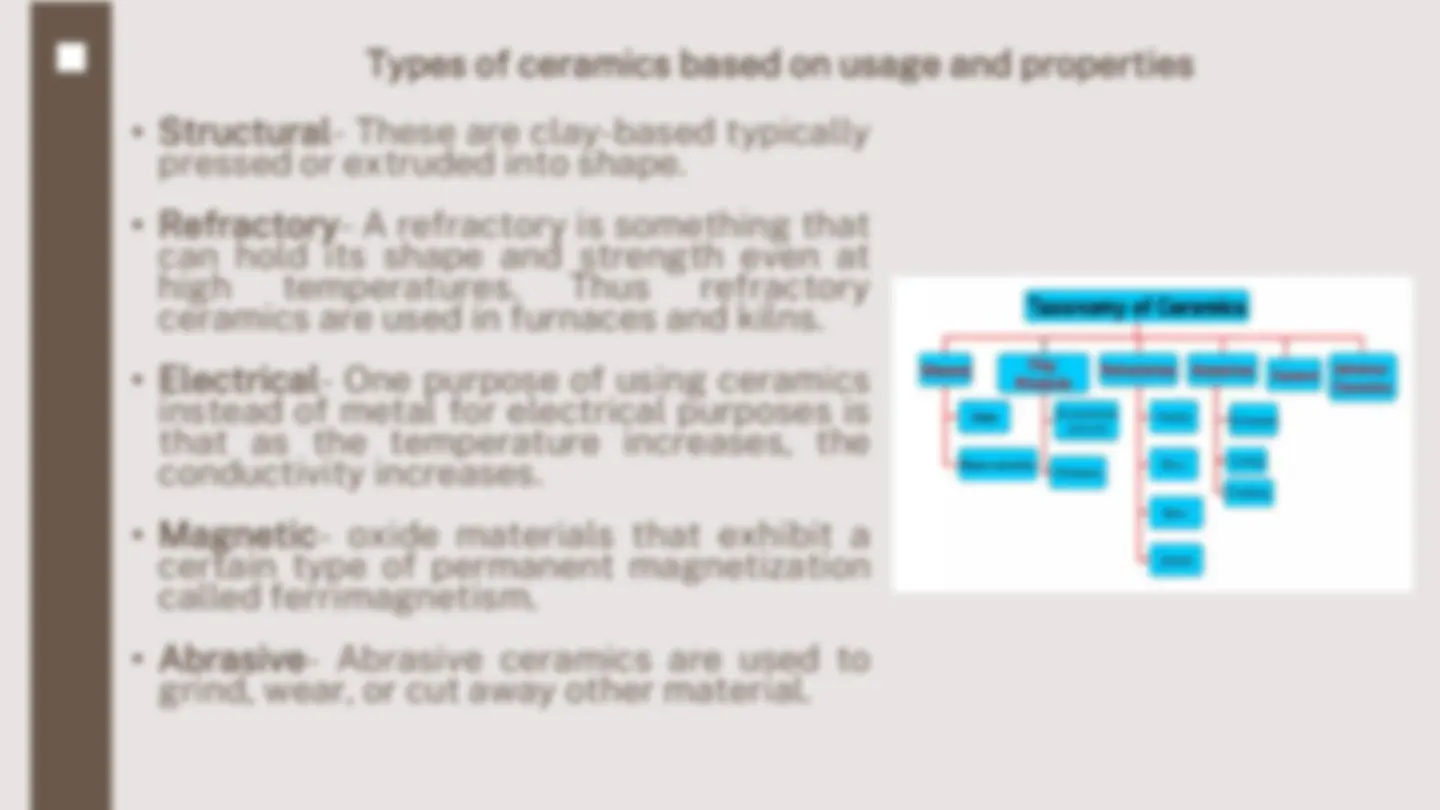
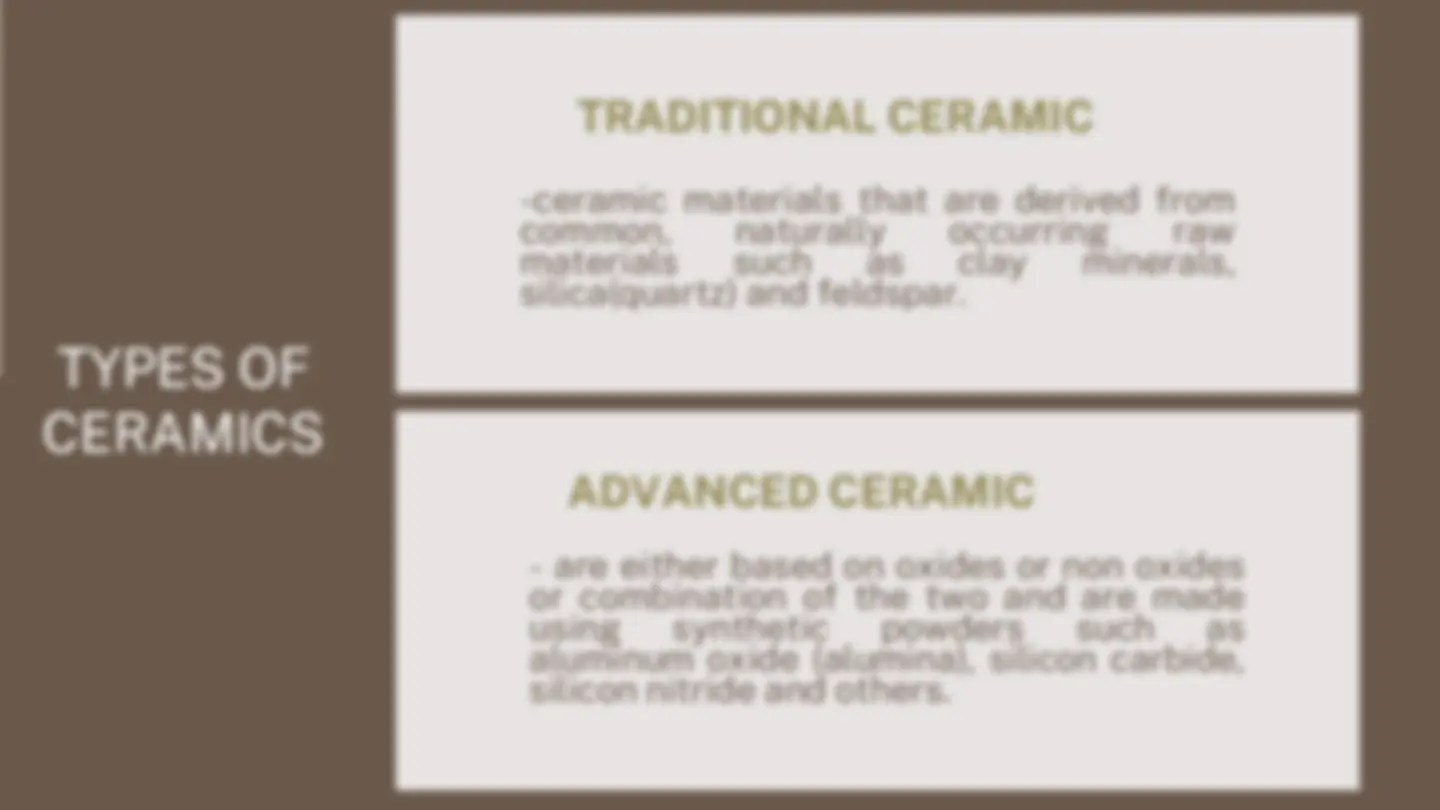
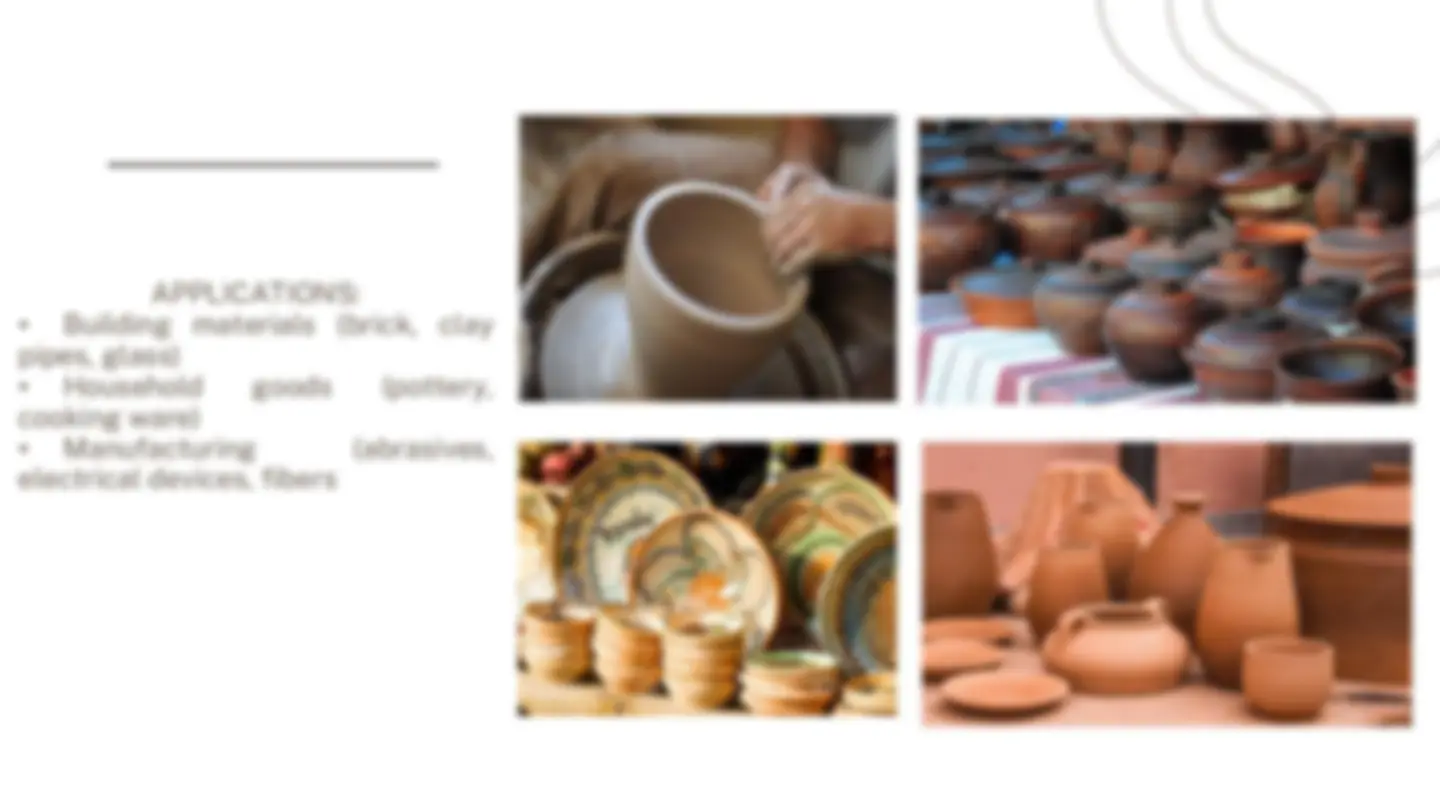
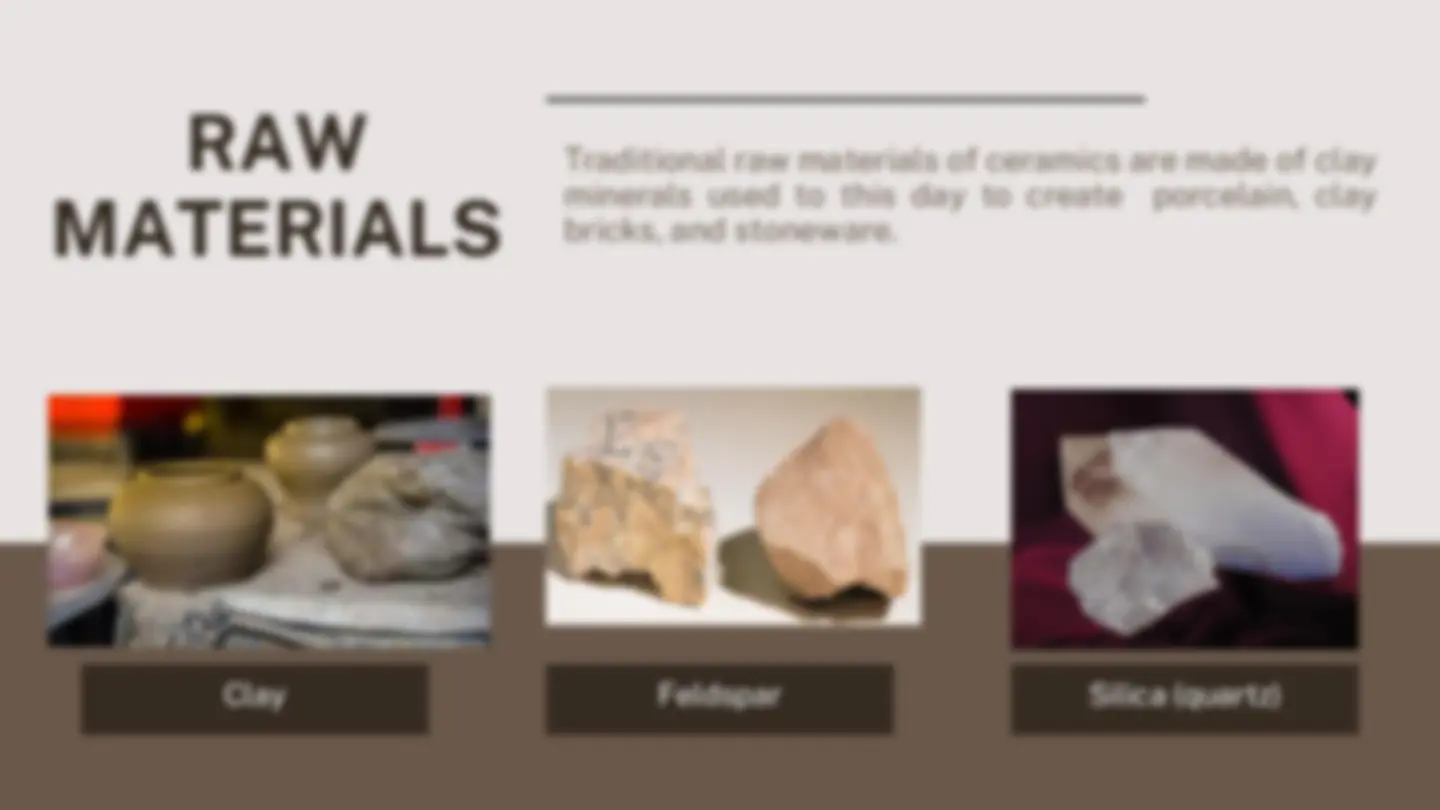
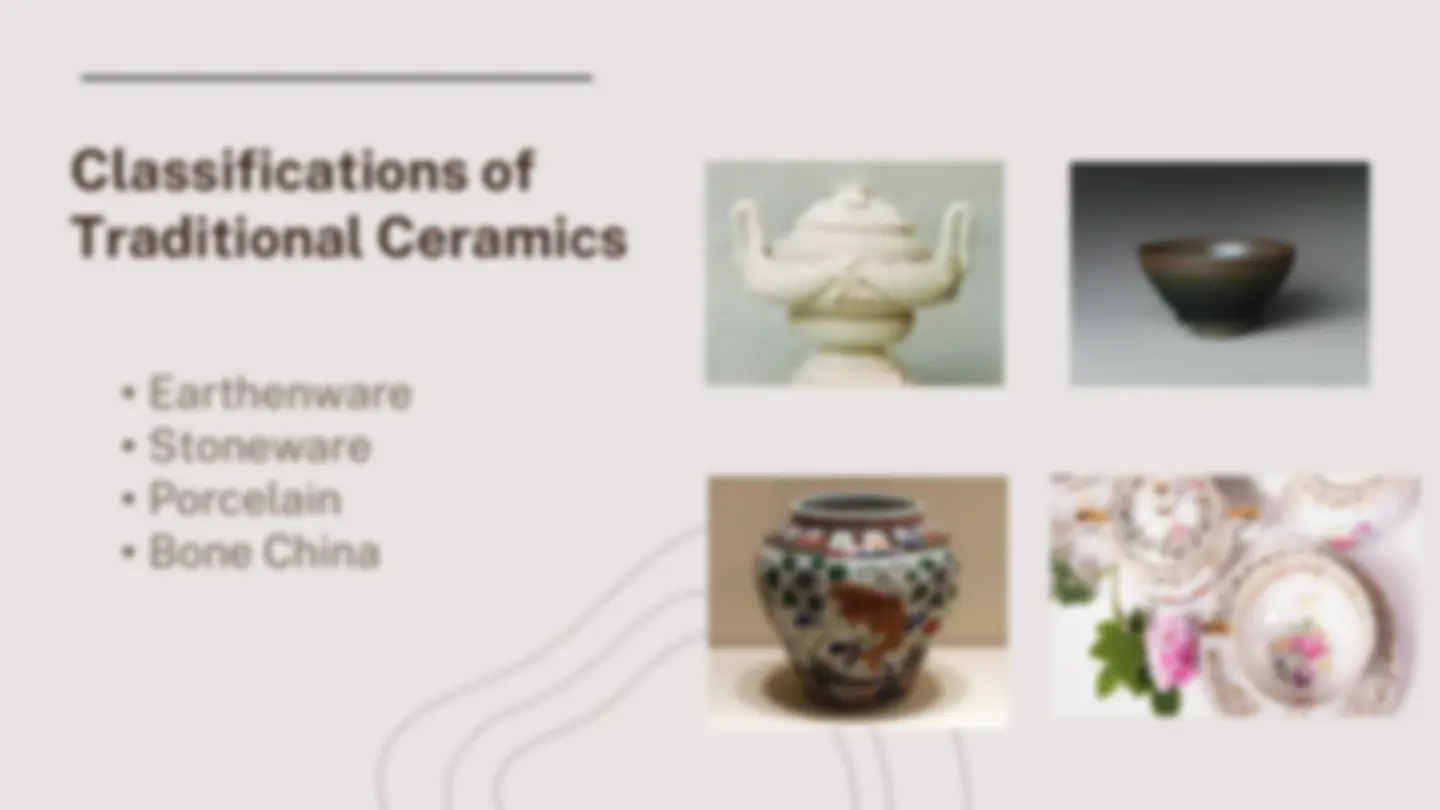
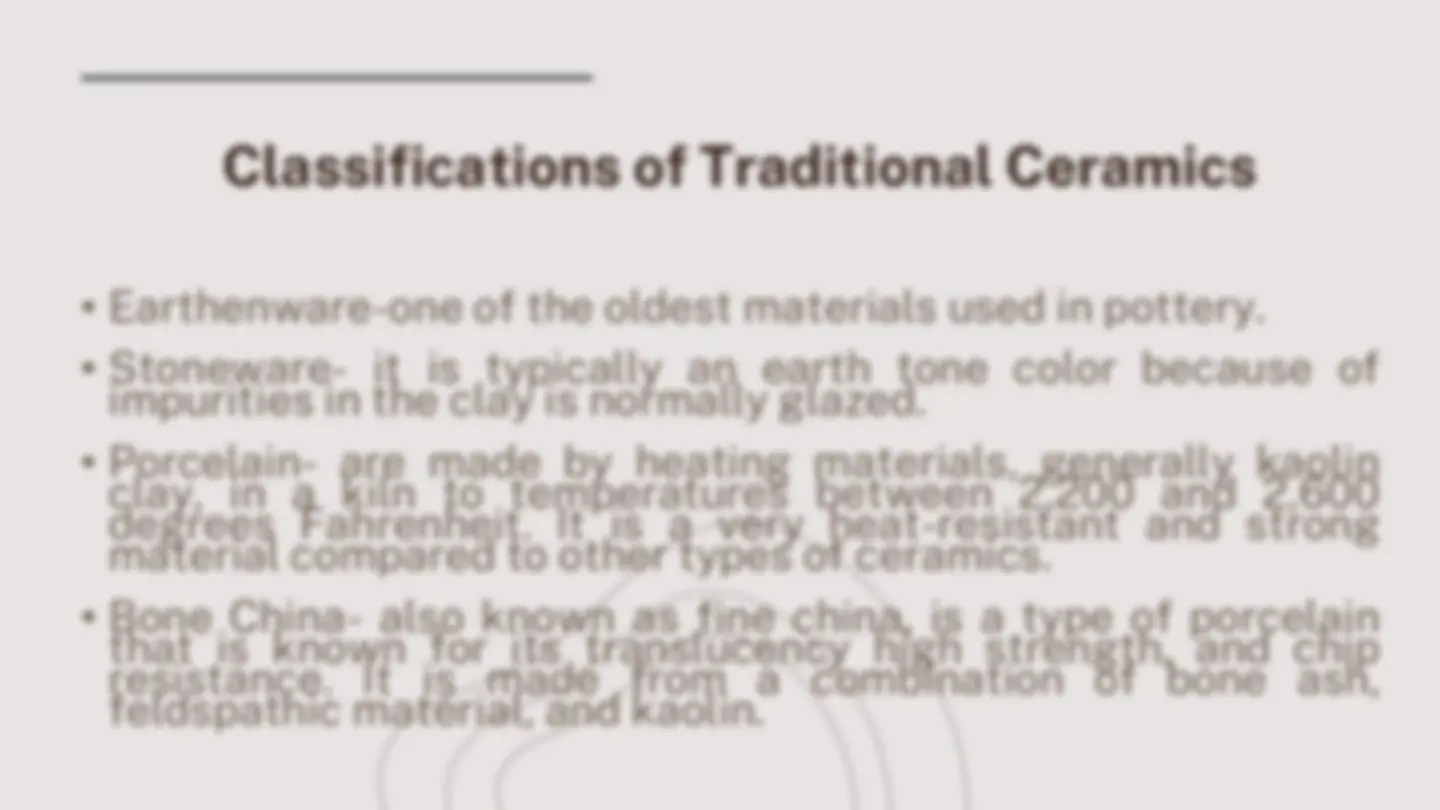
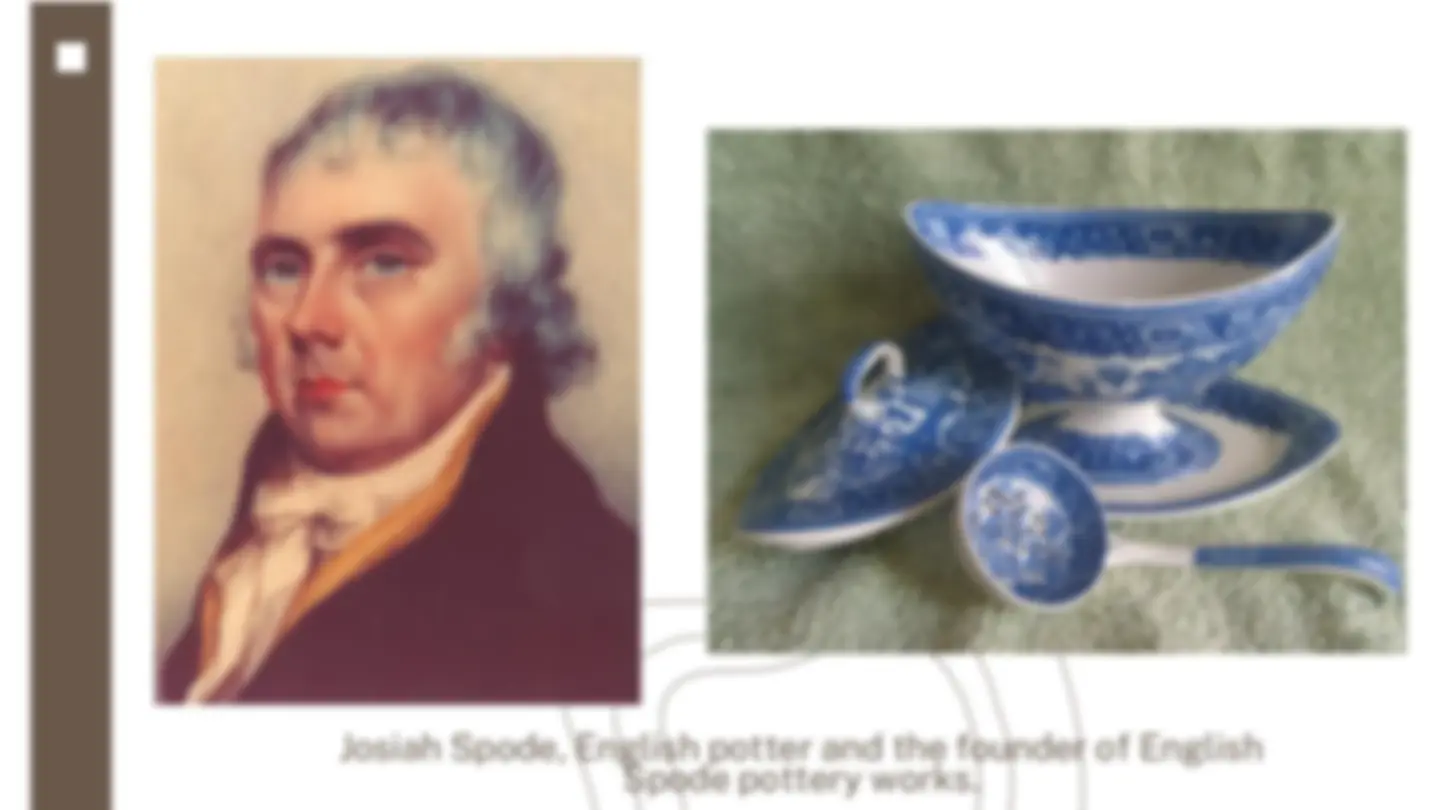
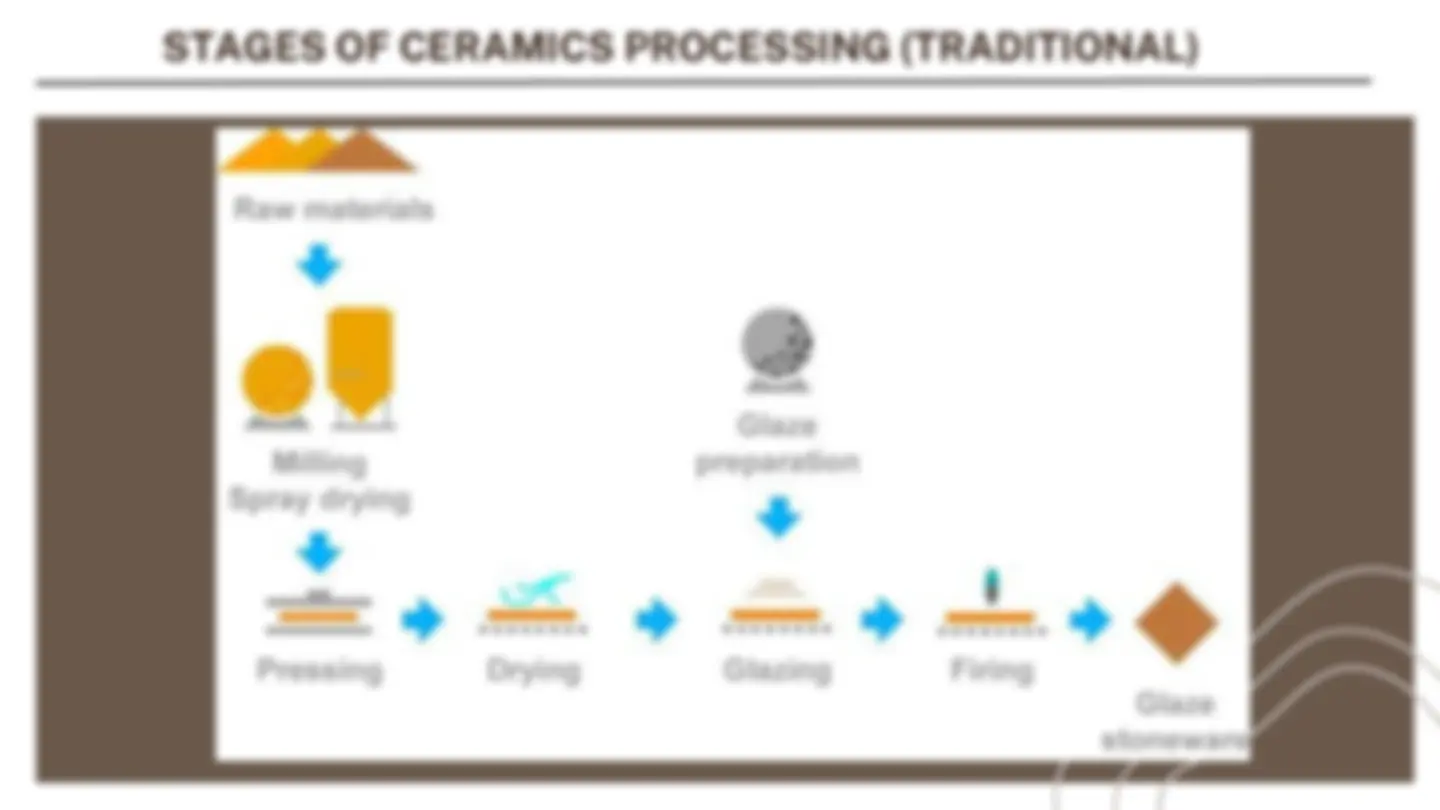
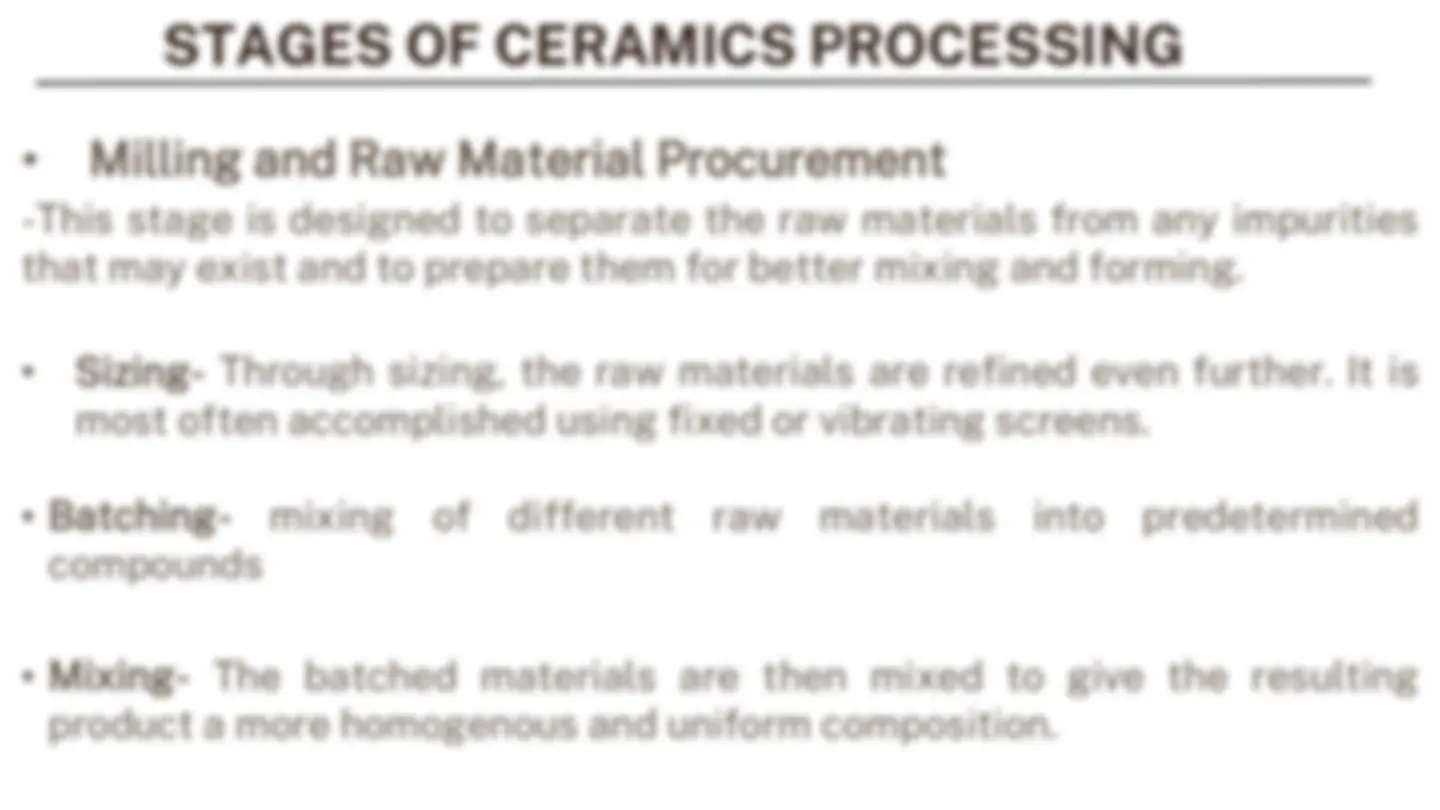
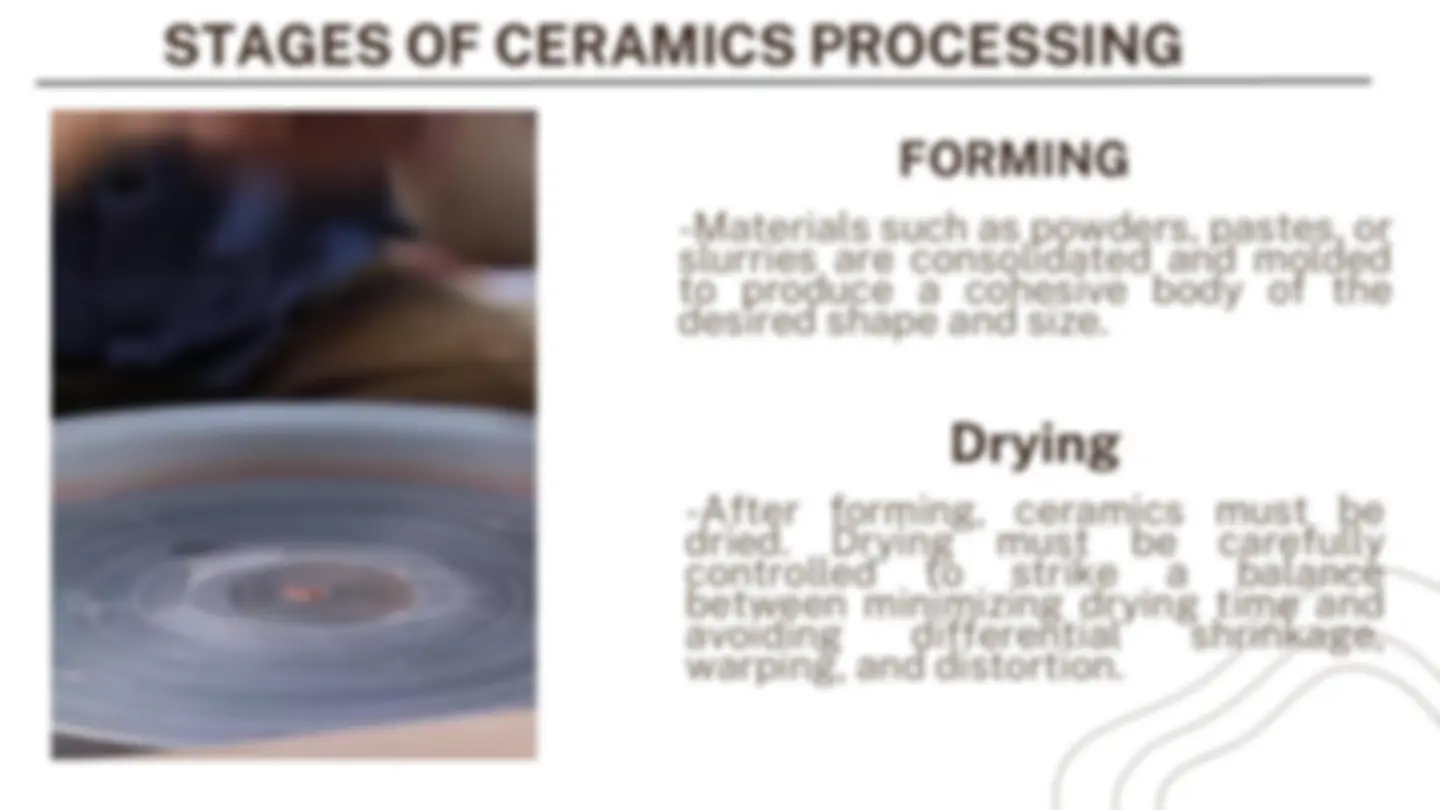
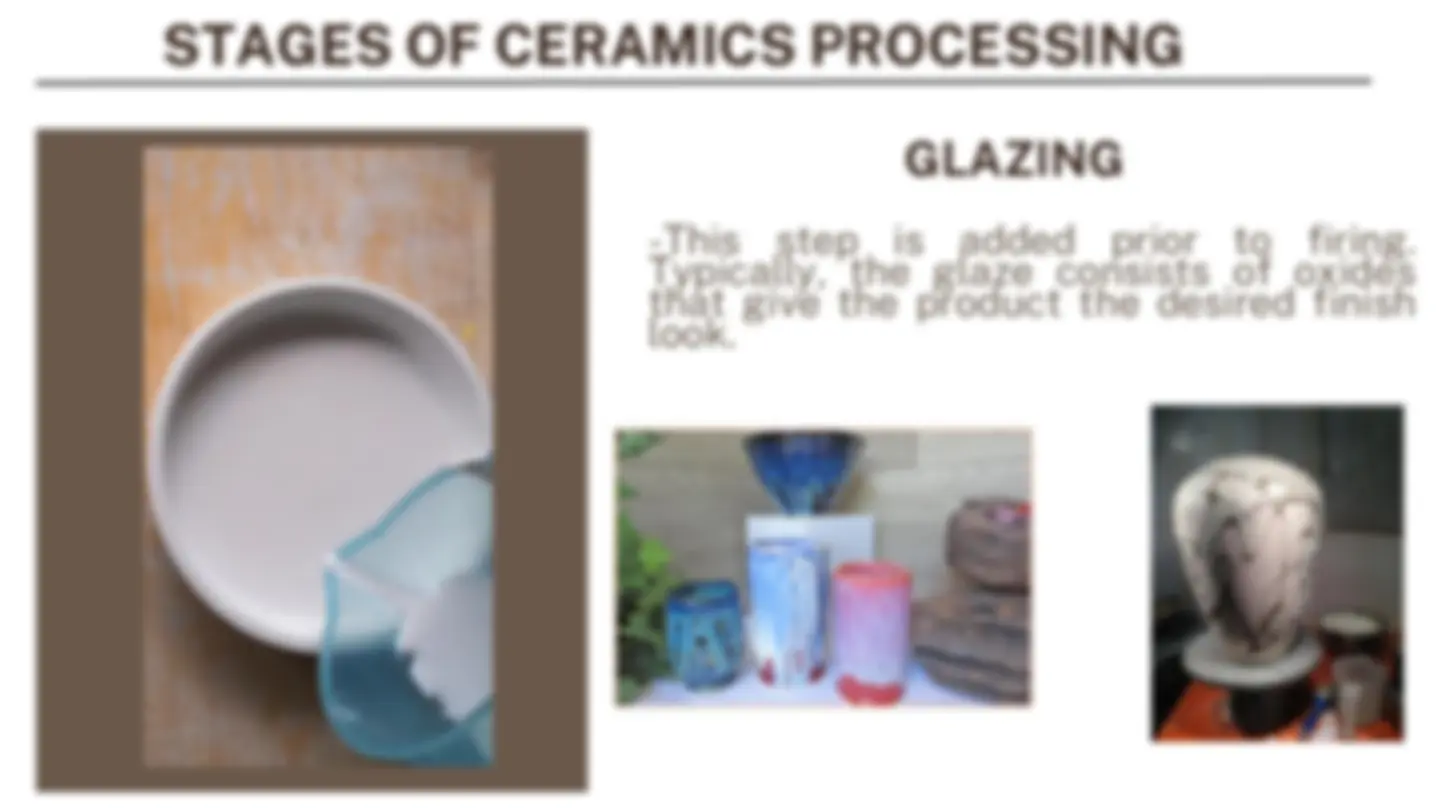
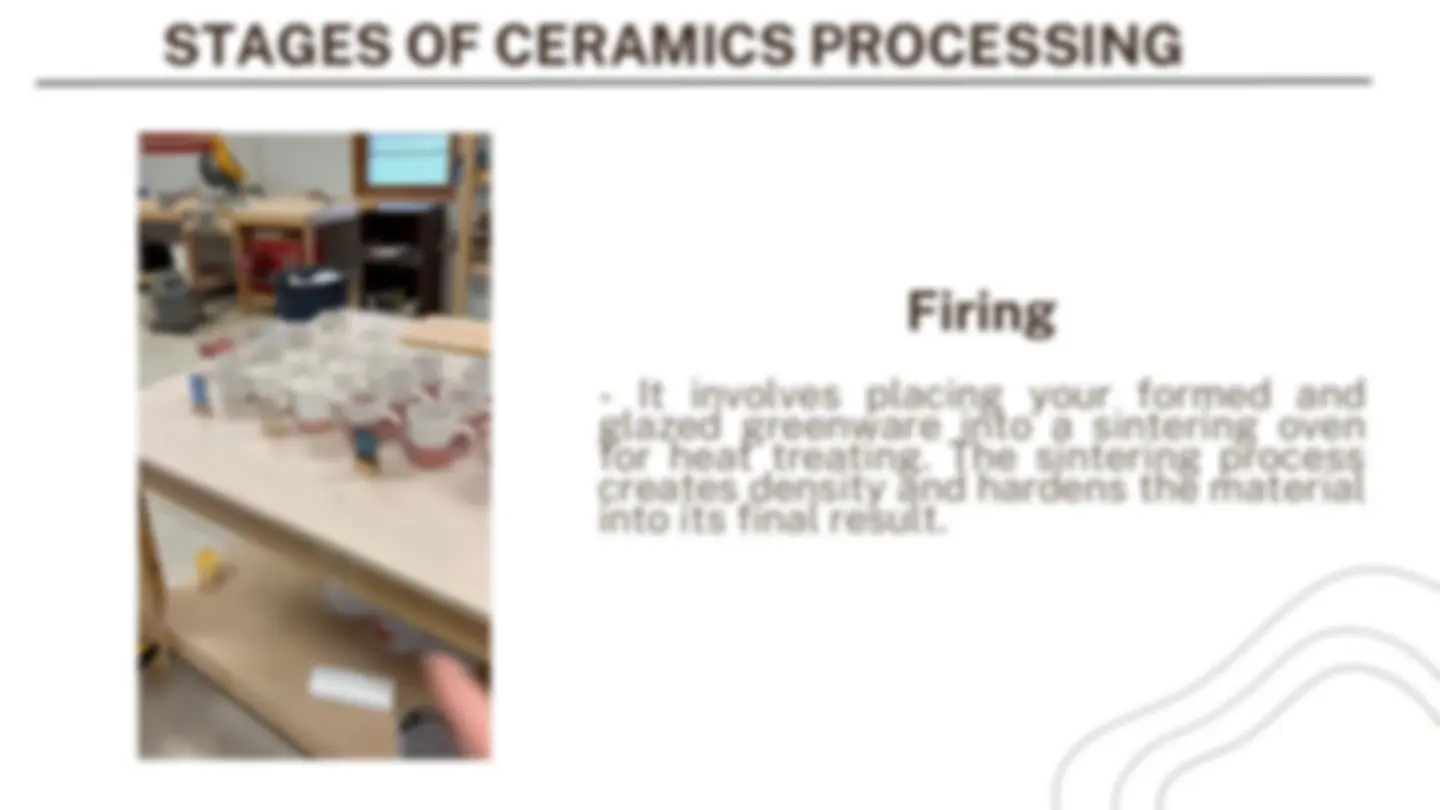
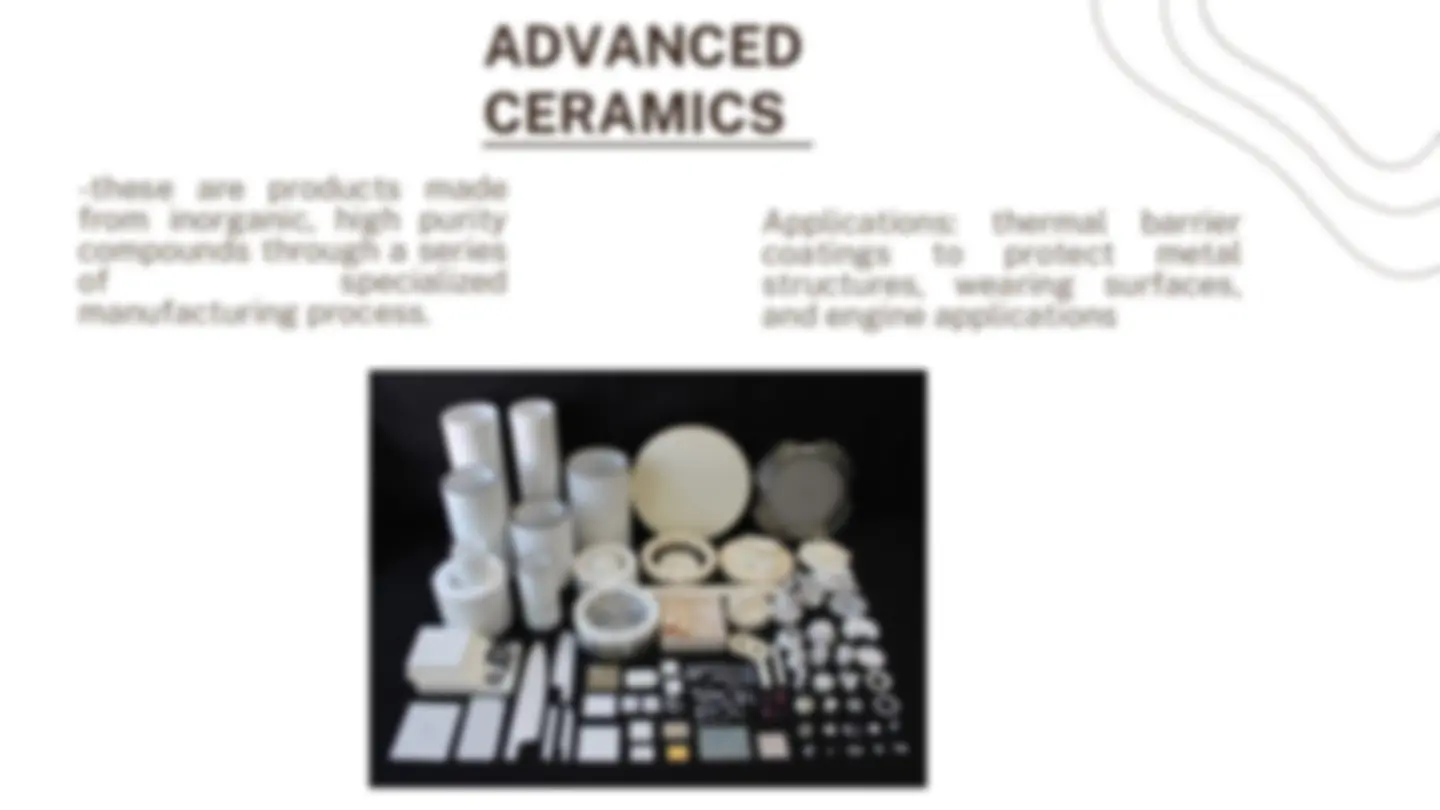
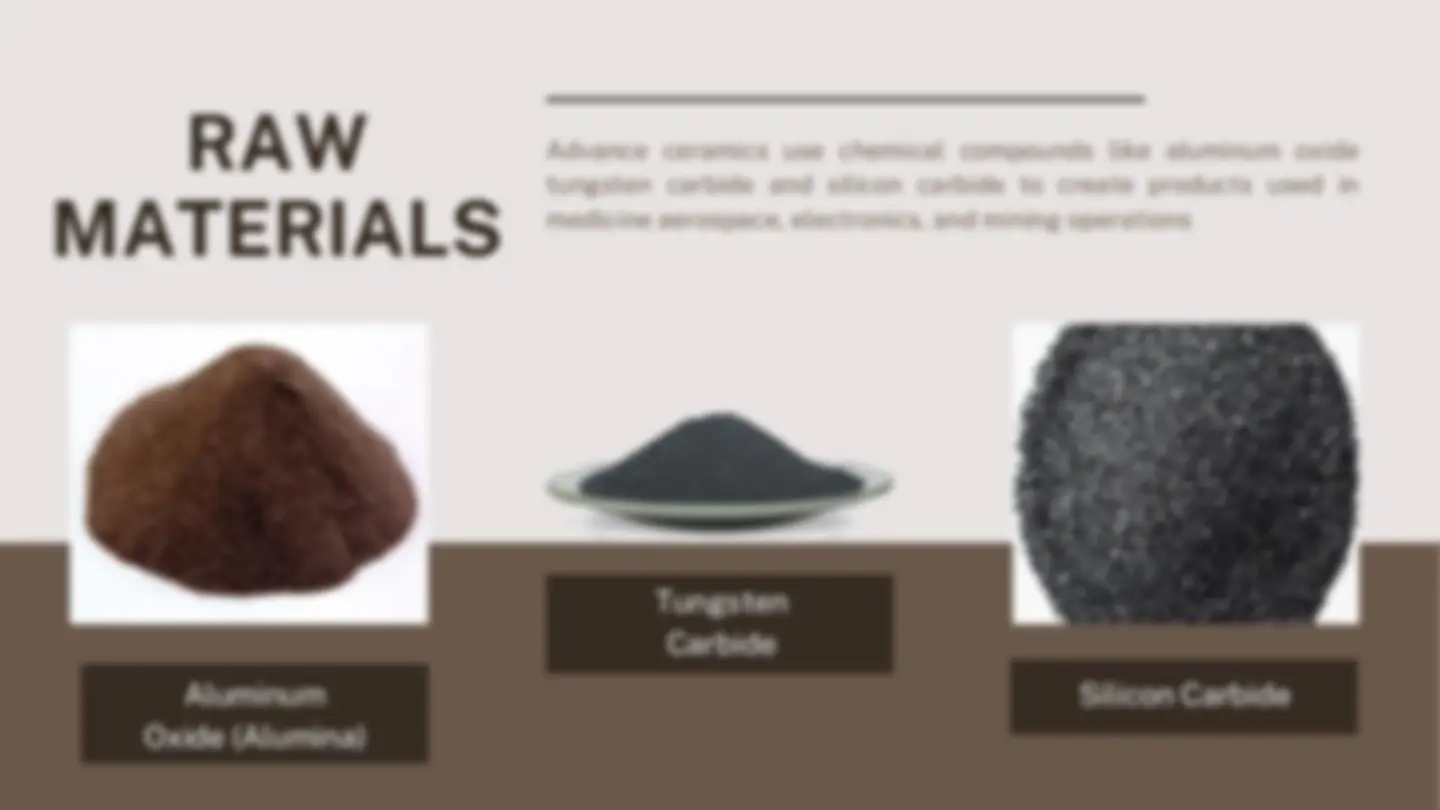
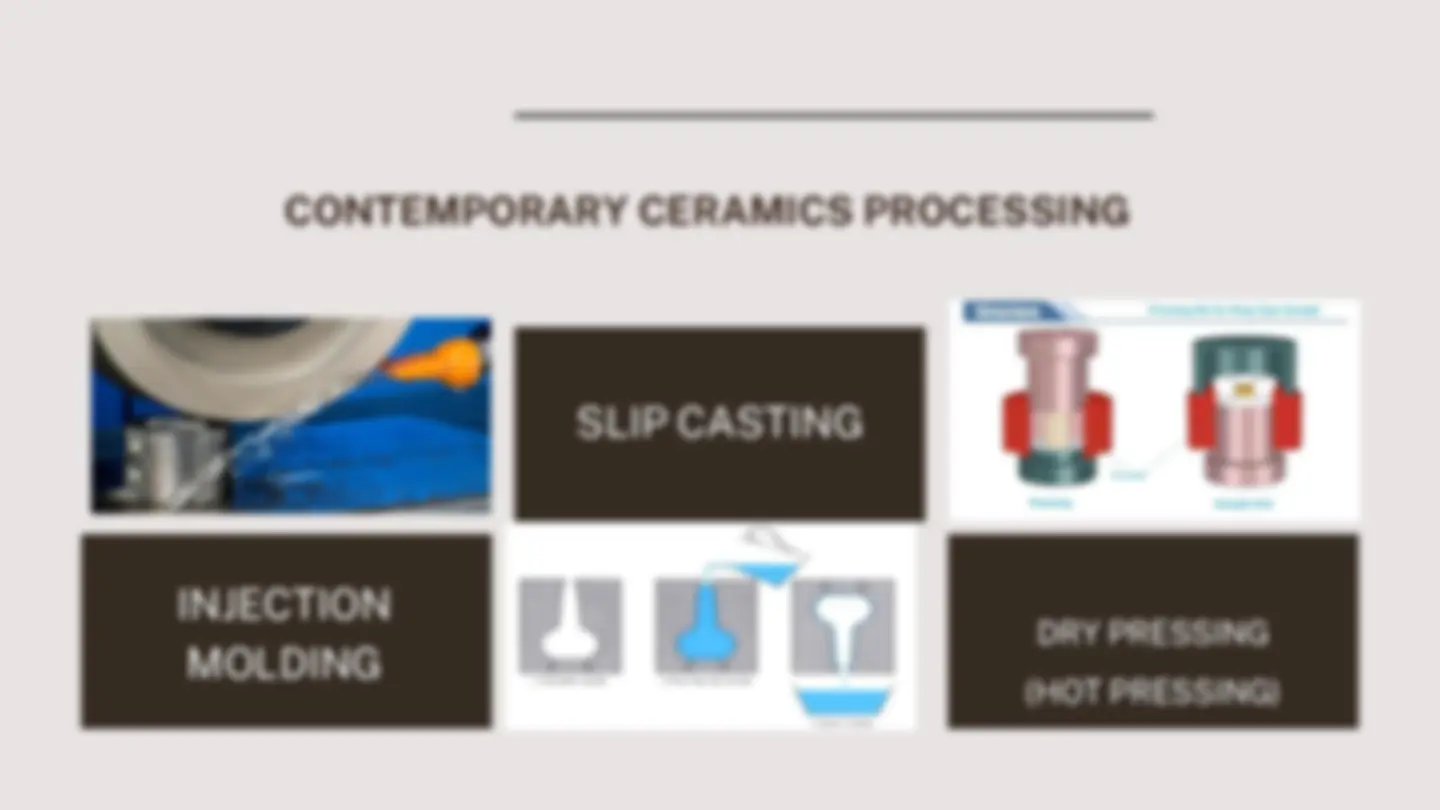
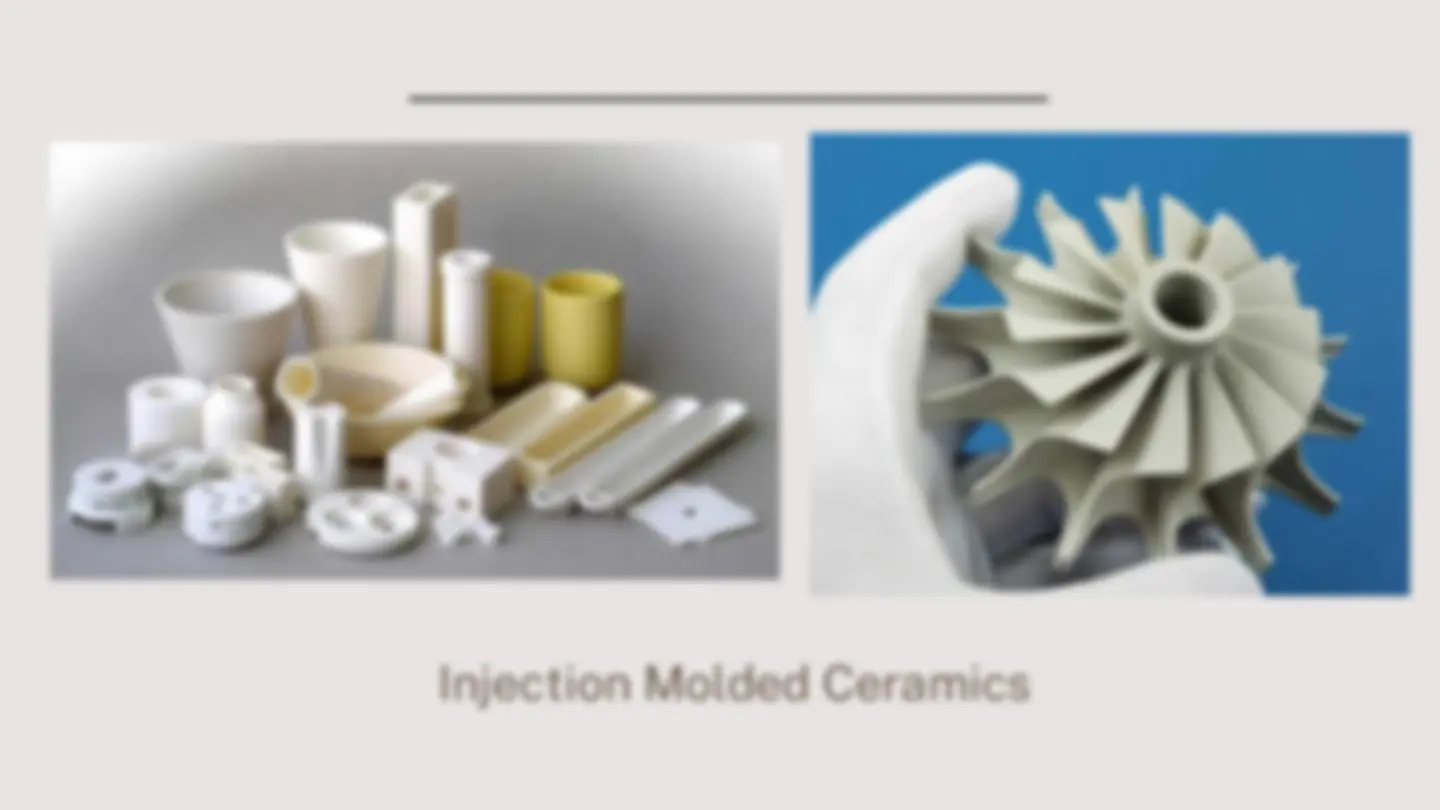
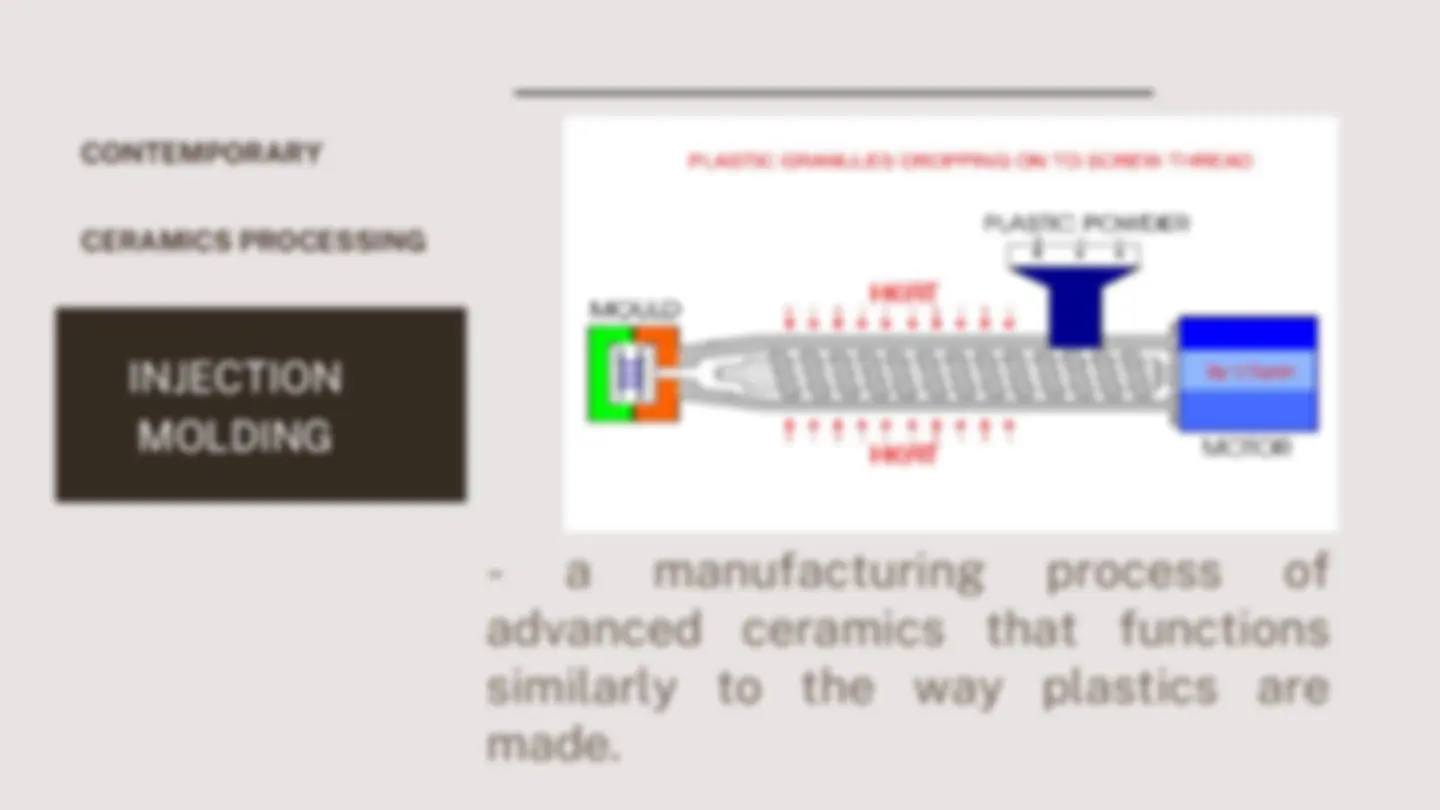
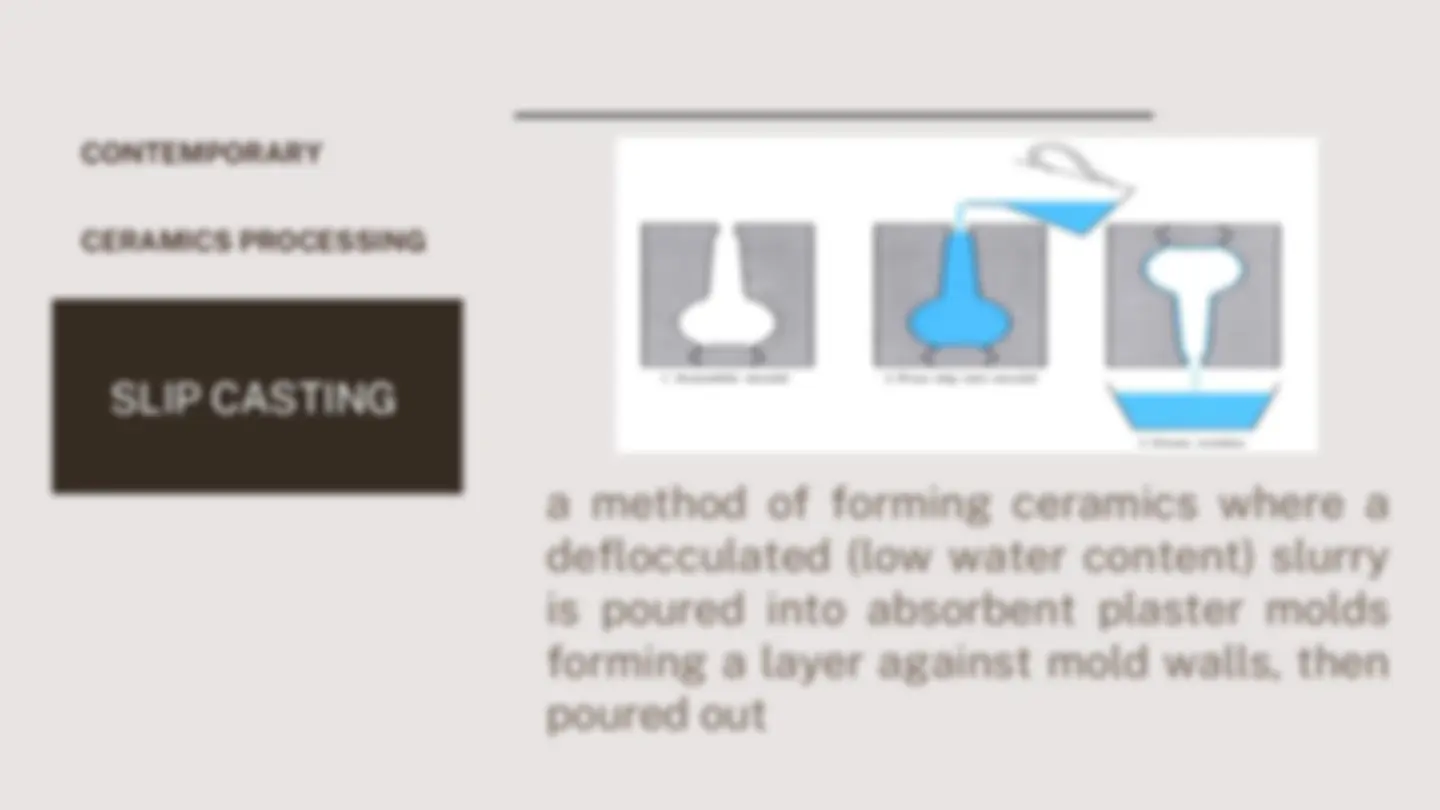
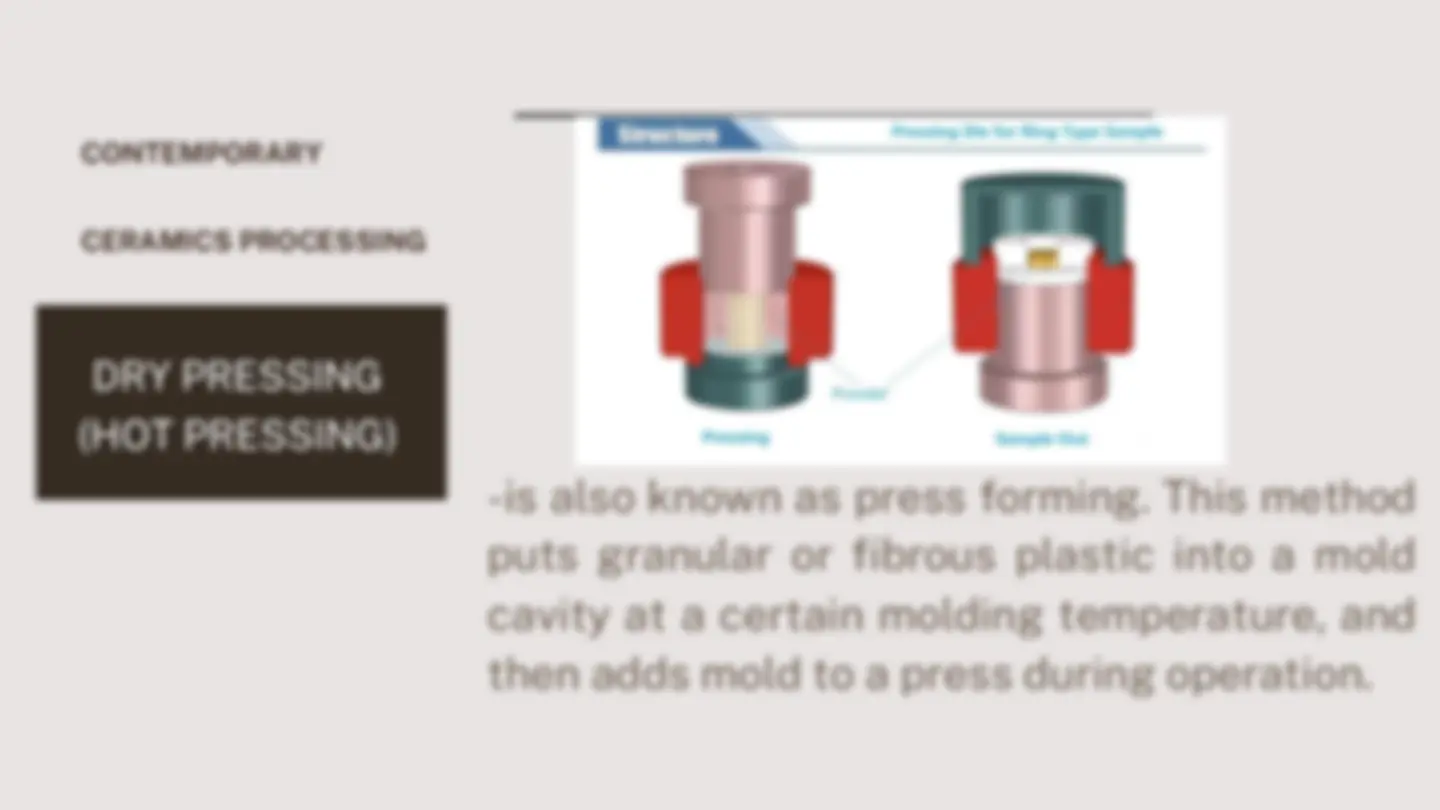



Study with the several resources on Docsity

Earn points by helping other students or get them with a premium plan


Prepare for your exams
Study with the several resources on Docsity

Earn points to download
Earn points by helping other students or get them with a premium plan
Community
Ask the community for help and clear up your study doubts
Discover the best universities in your country according to Docsity users
Free resources
Download our free guides on studying techniques, anxiety management strategies, and thesis advice from Docsity tutors
A brief history of glass and ceramics, including their manufacturing processes and uses. It covers the development of glass from ancient times to the present day, including the invention of toughened and wired glass. It also discusses the different types of ceramics, their properties, and uses, including traditional and contemporary ceramics. the manufacturing processes of glass and ceramics, including annealing, flue treatment, oven treatment, quality control, and packing and shipping. It also covers the stages of ceramics processing, including forming, drying, and glazing.
Typology: Study Guides, Projects, Research
1 / 41

This page cannot be seen from the preview
Don't miss anything!


































Glass is made from natural and abundant raw materials (silica sand, soda ash and limestone) that are melted at very high temperature to form a new material: glass. RAW MATERIALS Silica Sand Soda Ash Limestone
VARIETIES OF GLASS
GLASS PROCESS MANUFACTURING
Venus of Dolni Vestonice